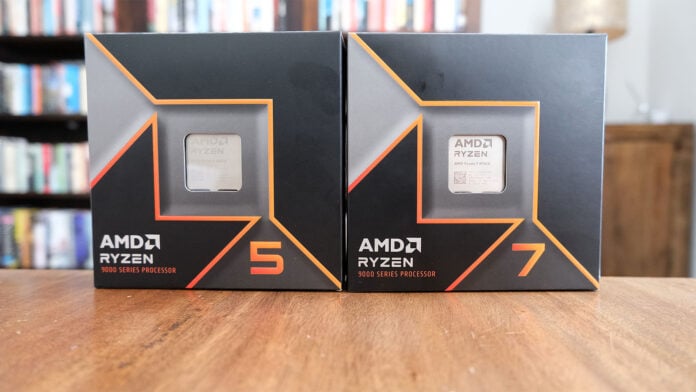Announced at Computex this year, AMD’s Ryzen 9000 Series CPUs have led a charmed life. Originally due July 31, the chip giant took a decision to delay the launch for quality control reasons. Now, the release is staggered, with the Ryzen 7 9700X and Ryzen 5 9600X on shelf August 8, followed by Ryzen 9 9950X and Ryzen 9 9900X a week later.
The most notable feature of these chips is the brand-new Zen 5 CPU architecture. Built as a foundational design on which the next few generations of Zen will expand upon, Zen 5 doubles down on processing width, makes manifest changes to the floating-point unit, and features faster caches. You can read all about it in our Zen 5 primer.
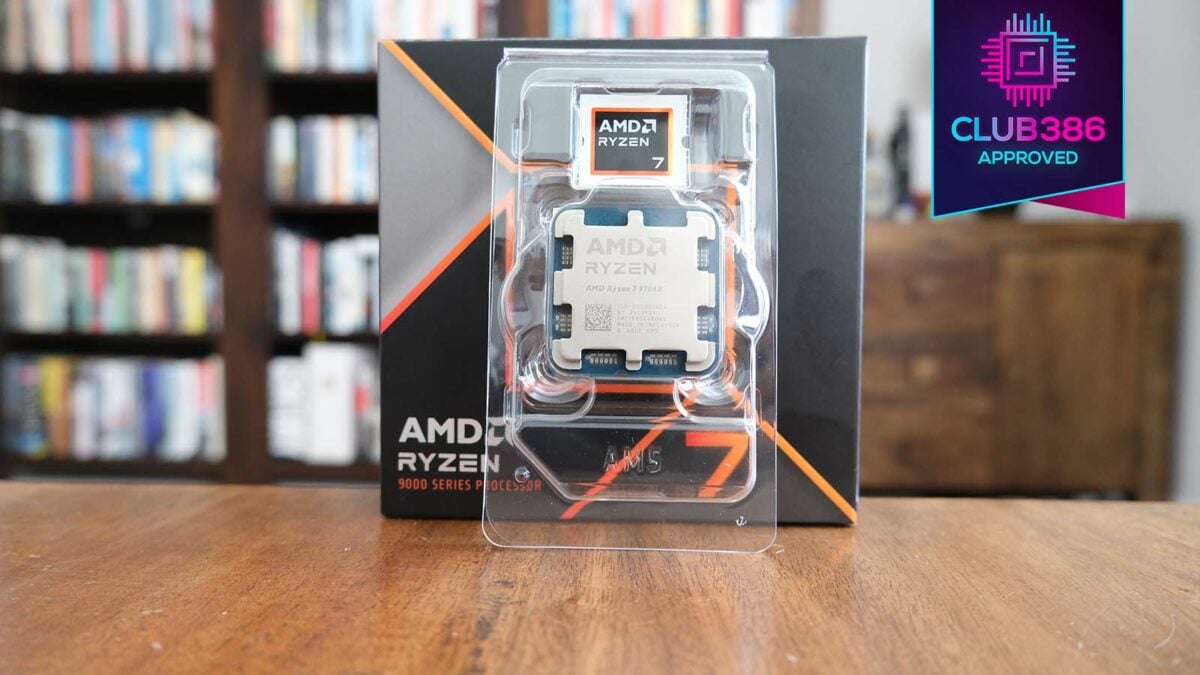
Ryzen 7 9700X and Ryzen 5 9600X
£340 / £270
Pros
- Easy upgrade on AM5
- Solid gaming chops
- Excel in certain workloads
- Run extremely cool
Cons
- Boot times still inconsistent
- 65W TDP hampers potential
- Equivalent Intel faster in many apps
Club386 may earn an affiliate commission when you purchase products through links on our site.
How we test and review products.
One area conspicuous by its absence, however, is a lack of a specific NPU to handle emerging AI tasks efficiently. The desktop version of Zen 5, codenamed Granite Ridge, has come too soon for the 50 TOPS integration present on the mobile variant known as Strix Point. I guess the rationale is you’ll run said tasks on a discrete GPU for optimal performance.
AMD’s commitment to long-term platform support is evident with Zen 5 as it shares the same AM5 socket as its direct predecessor. This means Zen 5 CPUs will work in present AMD 600-series motherboards – you know, X670(E), B650(E) – though a BIOS update may be in order for getting the most out of the processors. AMD will introduce a minor chipset update in the fall. X870(E) boards will have USB 4.0 as standard, but that’s about all. It’s baffling that these boards, first shown off at Computex, arrive at a different time.
As before, AMD also plans on cache-enriched X3D versions at a later date, keeping the same release philosophy as Ryzen 5000 and 7000 Series.
Ryzen Lineup
| Model | Cores / Threads | TDP | L3 Cache | Base Clock | Boost Clock | Launch MSRP |
|---|---|---|---|---|---|---|
| 9000 (2024) | ||||||
| Ryzen 9 9950X | 16 / 32 | 170W | 64MB | 4.3GHz | 5.7GHz | $649 |
| Ryzen 9 9900X | 12 / 24 | 120W | 64MB | 4.4GHz | 5.6GHz | $499 |
| Ryzen 7 9700X | 8 / 16 | 65W | 32MB | 3.8GHz | 5.5GHz | $359 |
| Ryzen 5 9600X | 6 / 12 | 65W | 32MB | 3.9GHz | 5.4GHz | $279 |
| 7000 (2022) | ||||||
| Ryzen 9 7950X | 16 / 32 | 170W | 64MB | 4.7GHz | 5.7GHz | $699 |
| Ryzen 9 7900X | 12 / 24 | 170W | 64MB | 4.7GHz | 5.6GHz | $549 |
| Ryzen 7 7700X | 8 / 16 | 105W | 32MB | 4.5GHz | 5.4GHz | $399 |
| Ryzen 5 7600X | 6 / 12 | 105W | 32MB | 4.7GHz | 5.3GHz | $299 |
| 5000 (2020) | ||||||
| Ryzen 9 5950X | 16 / 32 | 105W | 64MB | 3.4GHz | 4.9GHz | $799 |
| Ryzen 9 5900X | 12 / 24 | 105W | 64MB | 3.7GHz | 4.8GHz | $549 |
| Ryzen 7 5700X | 8 / 16 | 65W | 32MB | 3.4GHz | 4.6GHz | $299 |
| Ryzen 5 5600X | 6 / 12 | 65W | 32MB | 3.7GHz | 4.6GHz | $299 |
| 3000 (2019) | ||||||
| Ryzen 9 3950X | 16 / 32 | 105W | 64MB | 3.5GHz | 4.7GHz | $749 |
| Ryzen 9 3900X | 12 / 24 | 105W | 64MB | 3.8GHz | 4.6GHz | $449 |
| Ryzen 7 3700X | 8 / 16 | 65W | 32MB | 3.6GHz | 4.4GHz | $329 |
| Ryzen 5 3600X | 6 / 12 | 95W | 32MB | 3.8GHz | 4.4GHz | $249 |
Analysis
Here I list the four Ryzen 9000 Series chips along with high-level attributes. For your reference, I’ve also included the relevant processors from Zen 4, Zen 3, and Zen 2. Mapping the new processors over older Ryzens is easy because AMD keeps the same core-and-thread topology as three previous generations going back five years. That’s a potential stumbling block with respect to all-out performance.
Nevertheless, Ryzen 9000 Series cores enjoy a refined manufacturing process from foundry partner TSMC. Known as N4X, it’s better than recent Ryzen 7000 Series’ N5 in terms of efficiency. This is why you see comparatively lower TDPs for all but the range-topping 9950X. The IOD remains on the same N6 process as the previous generation, which is one of the benefits of using a modular approach.
On the face of it, I’m intrigued AMD’s reduced 9700X and 9600X TDPs down from 105W to 65W, consistent with Ryzen 5000 and 3000 Series, making them better suited for quieter and cooler PCs. This turn of events makes it difficult to introduce non-X parts further down the line. My thinking is, if AMD indeed does so, they will simply be clocked lower. Of course, with this new pair, there’s nothing stopping you from upping the voltage and performance; all chips remain unlocked from an overclocking perspective.
Peering closer and comparing like for like, Zen 5 CPUs have a noticeably lower base clock than the Zen 4 cohort. This clock defines the minimum speed the processor runs at in applications, and I’m a little concerned about the real-world implications.
In conjunction with better silicon for the cores and AMD’s 16% geomean gain over Zen 4 emanating from smarter architecture, there’s every reason to believe Ryzen 9000 Series are better processors. The question I’m answering in this editorial is by how much.
The Chips
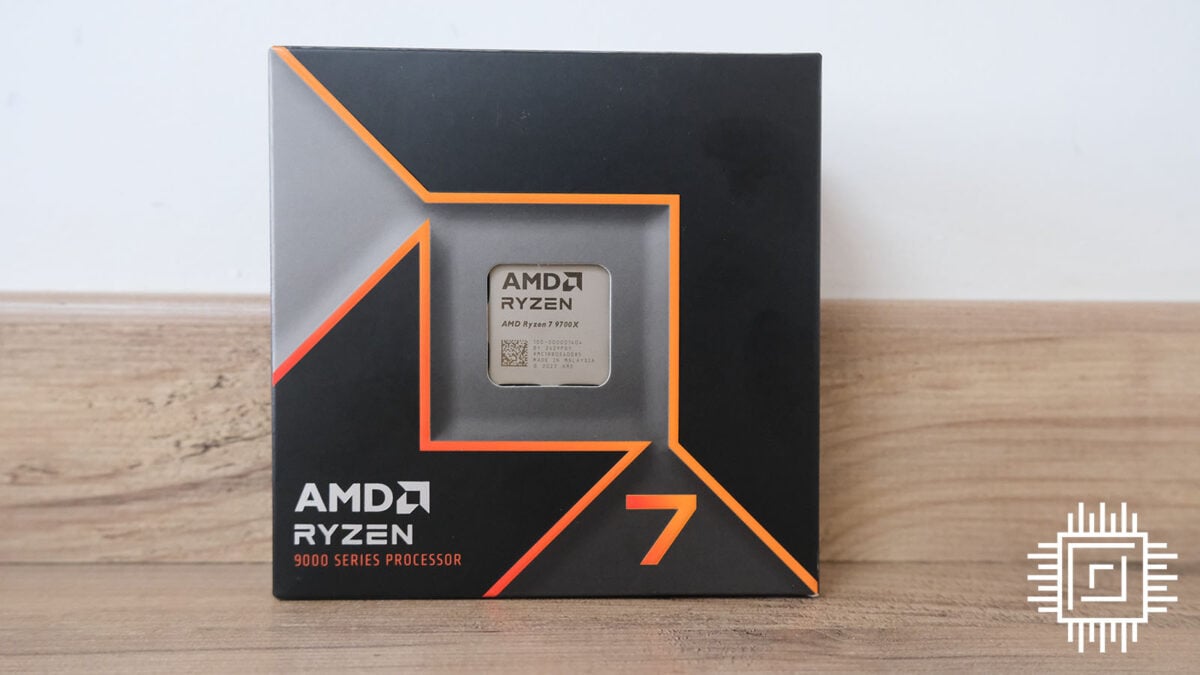
Anyone who’s laid their mitts on a Zen 4-based processor appreciates that packaging hasn’t changed much between generations. There’s no reason to do so, either, as both families use physically identical chips.
There is no cooler in either box. This approach is consistent with the Ryzen 7 7700X and Ryzen 5 7600X, though the also-65W 7600 (non-X) does have a Wraith Stealth. Go figure.
Looking at the codes contained atop of the Ryzen 7 9700X CPU, I can tell you that it was packaged in week 29 this year. That’s very recent, all things considered, and hints at AMD taking the chips hot off the press and packaging them up quickly.
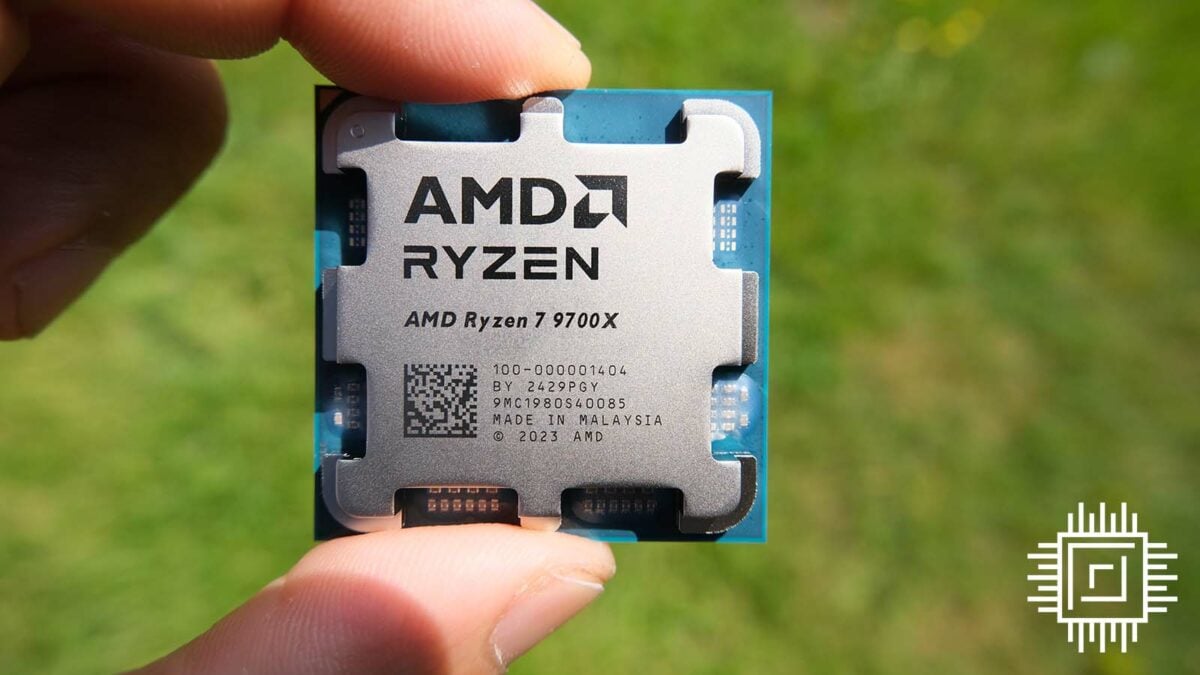
This could be any AMD AM5 processor, really. The familiar heatspreader design is a magnet for getting thermal paste caught around the edges, so investing in a shim helps keep it clean.
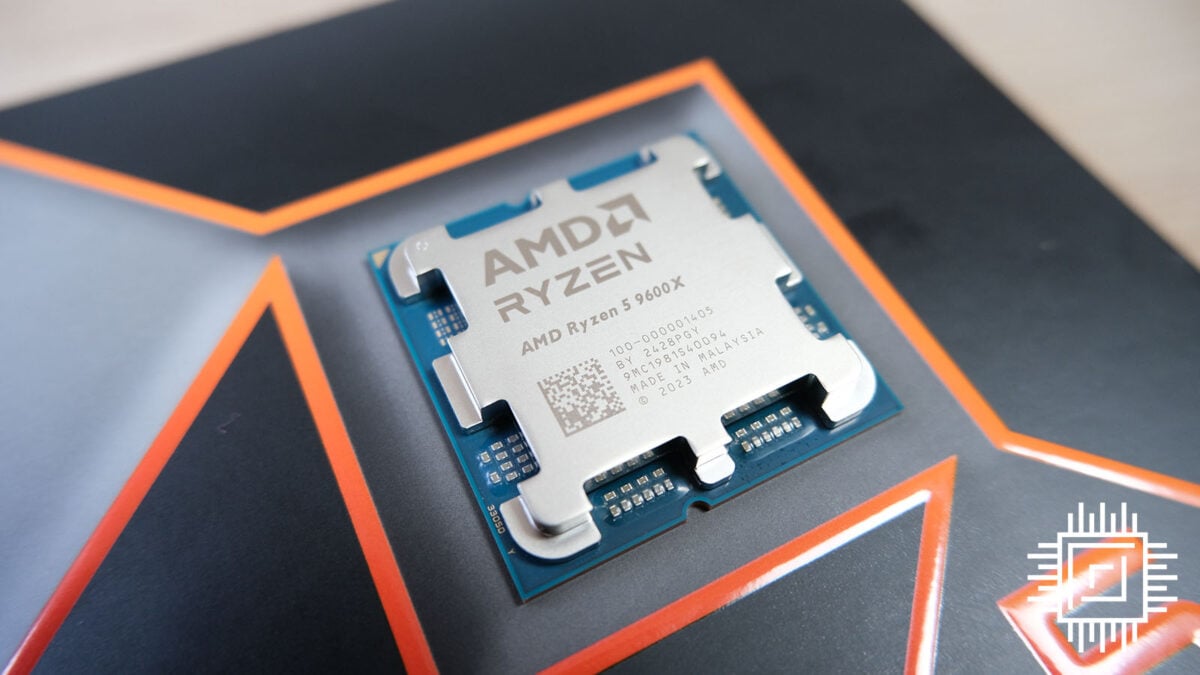
The Ryzen 5 9600X shares its bigger brother’s 65W TDP and 88W PPT. Housing the same single CCD underneath, albeit with fewer cores active, swapping out to this chip from a present Ryzen 7000 Series is easy as pie.
On many enthusiasts’ lips is whether AMD’s progress with architecture lends itself to an upgrade. This is what I’ll answer now.
Testing
To do this, I have benchmarked, from absolute scratch, seven relevant processors from the AMD Ryzen 9000, 7000, and Intel Core 14th Gen series. AMD chips are tested on an MSI X670E Ace, while Intel run on an ASRock Phantom Gaming Z790 Nova WiFi. Both are updated to the latest BIOS and run processors at their manufacturer-recommended TDPs.
By the way, I’m still perplexed as to why AMD’s platform takes so long to boot. Memory training is still very much in evidence with Ryzen 9000 Series, and after testing a glut of chips in consecutive fashion, the boot times between AMD and Intel platforms is readily apparent.
Common components include 64GB (2x32GB) Kingston Fury Beast memory at DDR5-6000 CL36, 2TB WD_Black SN850X SSD, Zotac GeForce RTX 4090 graphics (560.70 drivers), be quiet Dark Power 13 1,000W PSU, and Arctic Liquid Freezer III 420 AIO cooling.
Prefacing the productivity results and providing necessary context, it makes sense to list each tested chip’s all-core speed when running Cinebench 2024’s nT test for 10 minutes. Understanding the frequency lays appropriate foundation for what you are about to see.
| Chip | All-core frequency | Manufacturer’s TDP |
|---|---|---|
| AMD Ryzen 7 9700X | 4.634GHz | 65W |
| AMD Ryzen 7 7700X | 5.285GHz | 105W |
| AMD Ryzen 5 9600X | 5.090GHz | 65W |
| AMD Ryzen 5 7600X | 5.358GHz | 105W |
| AMD Ryzen 7 7800X3D | 4.835GHz | 120W |
| Intel Core i7-14700K | 4.523GHz | 253W |
| Intel Core i5-14600K | 4.453GHz | 181W |
App Performance
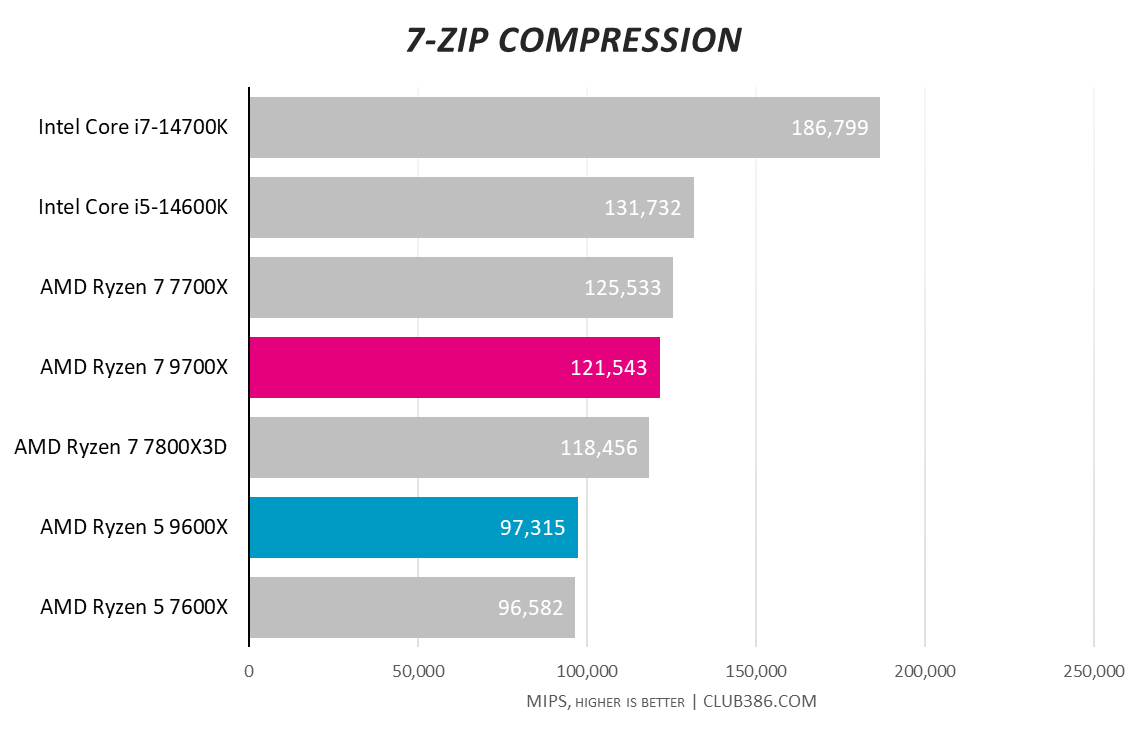
Here we go. A good first question to ask is why Ryzen 7 9700X is ever so slightly behind the Ryzen 7 7700X? Surely a newer chip bearing the same familial name ought to be better in every way. I’ll expand upon this later, but the reason is the 65W TDP hamstrings the 9700X’s potential, leading to lower frequency, as detailed in the table above.
Furthermore, it is miles behind the Intel Core i7-14700K. Granted, that chip is around 10% more expensive – $409 vs. $359 – and certainly a lot thirstier on wattage, yet the difference is stark.
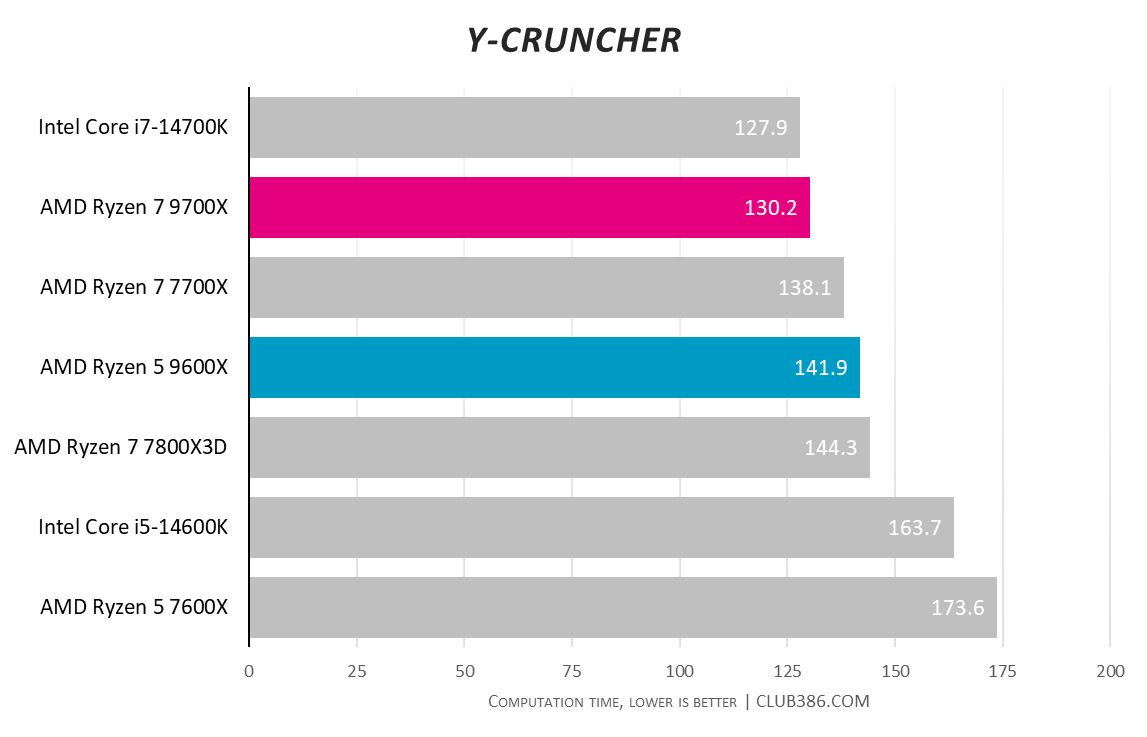
AMD does better in math-intensive Y-cruncher. Ryzen 5 9600X is not only a lot quicker than last-generation Ryzen 5 7600X, it also consumes less power in the process. A win-win situation that brings the best out of the new microarchitecture.
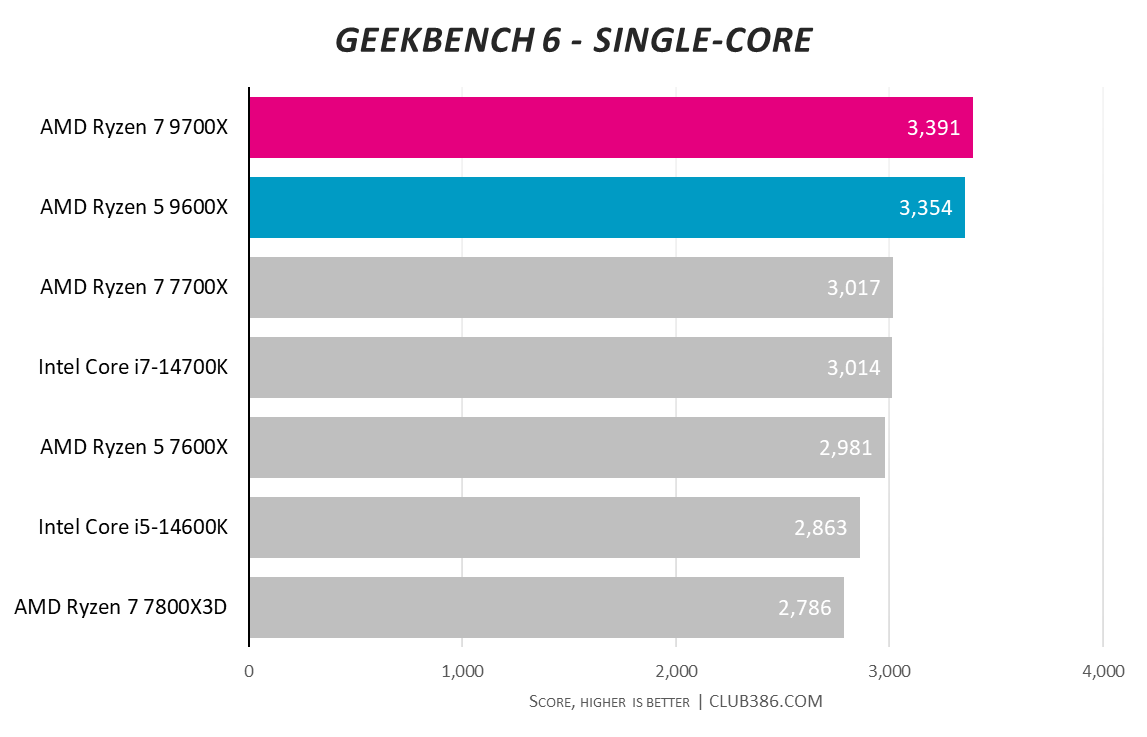
One of AMD’s key takeaways with Zen 5 revolves around a foundationally muscular design that’s particularly adept in single-thread throughput. Difficult to argue with that logic here.
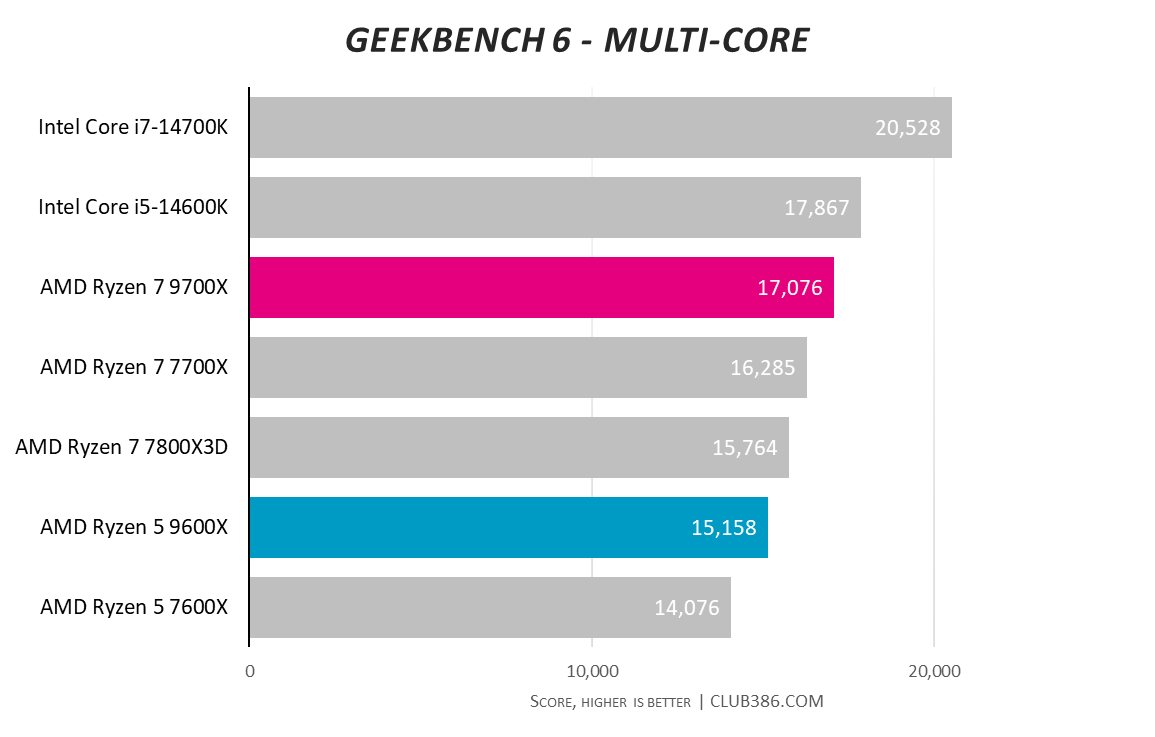
Small generation hikes are expected when dialling down the TDP from last generation 105W to 65W this time around.
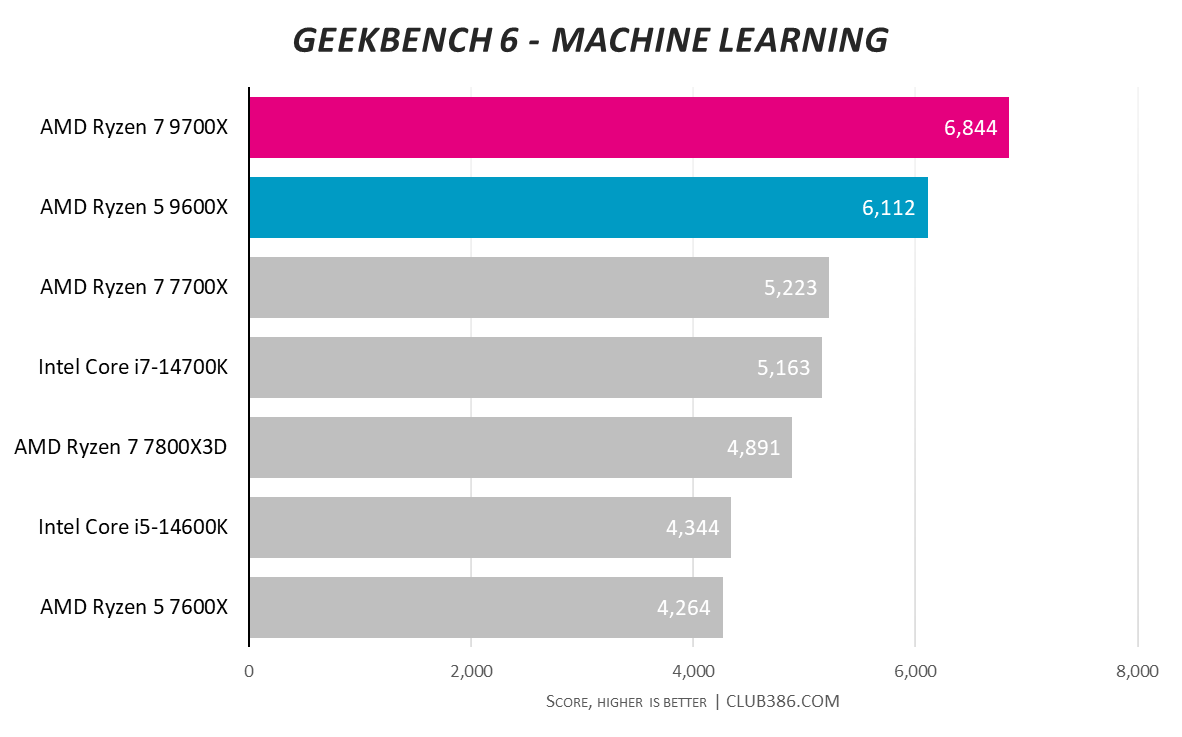
Here’s an interesting one. The twin Ryzen 9000 Series processors blitz the Geekbench 6 machine-learning test that relies on the heavy lifting of float32, float16, and int8 data types. Zen 5 is built with this technology in mind.
Content Creation
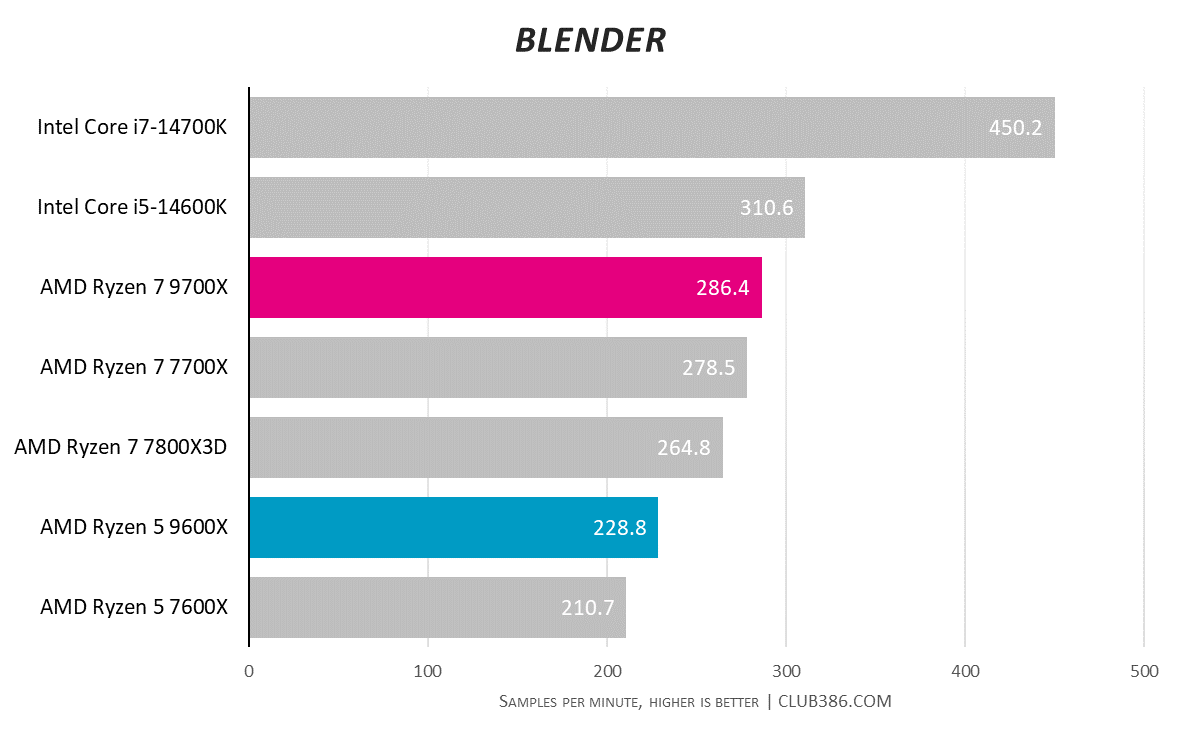
Better than what’s come before, though AMD’s fewer cores and threads are plain to see when I look over to what Intel offers. It feels wrong that a Core i5-14600K beats the Ryzen 7 9700X in this throughput test.
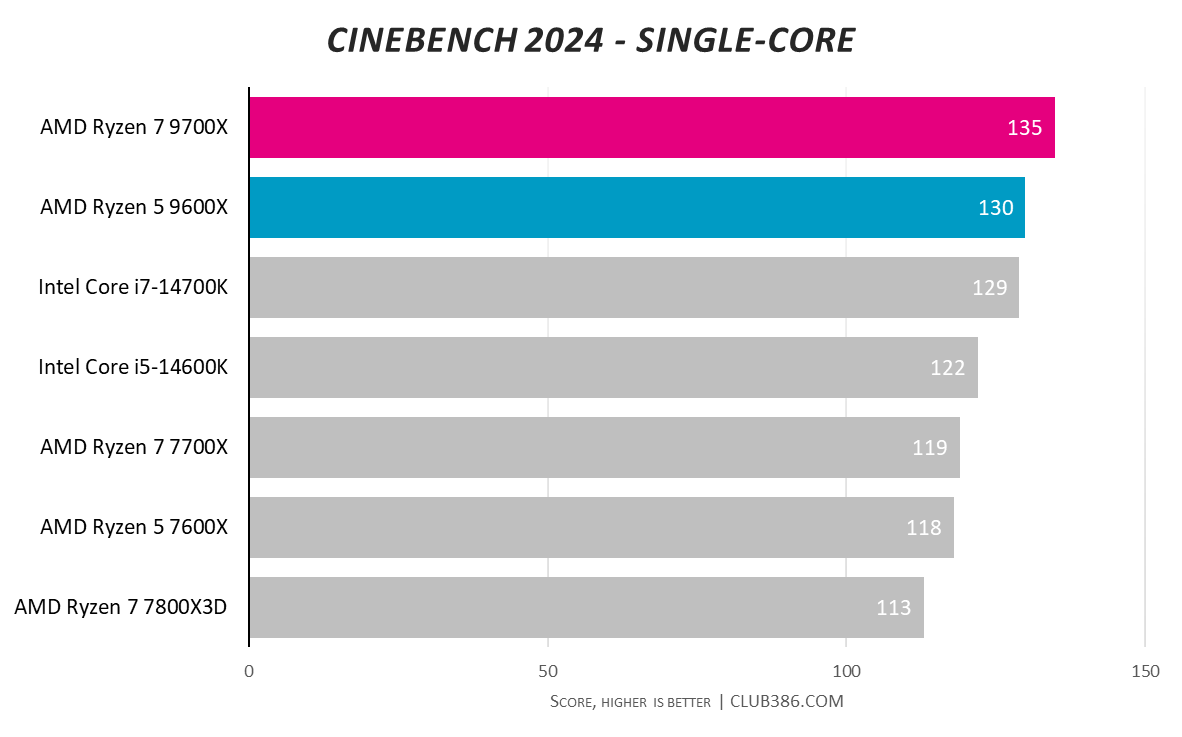
More evidence that Zen 5 is impressive when running light-load applications.
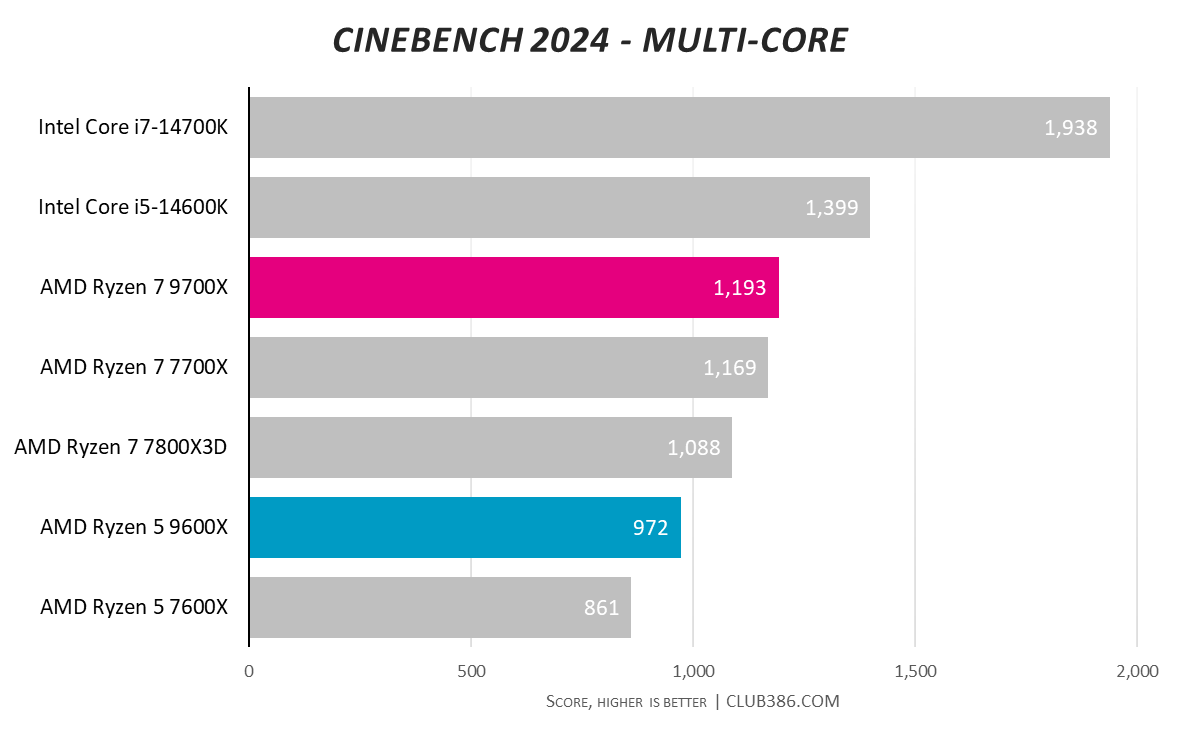
Hamstrung by meagre TDPs, the new generation of Ryzens are not much faster than their 7000 Series namesakes. They’re absolutely taken to task with broadly equivalent Intel chips touting far more cores and threads.
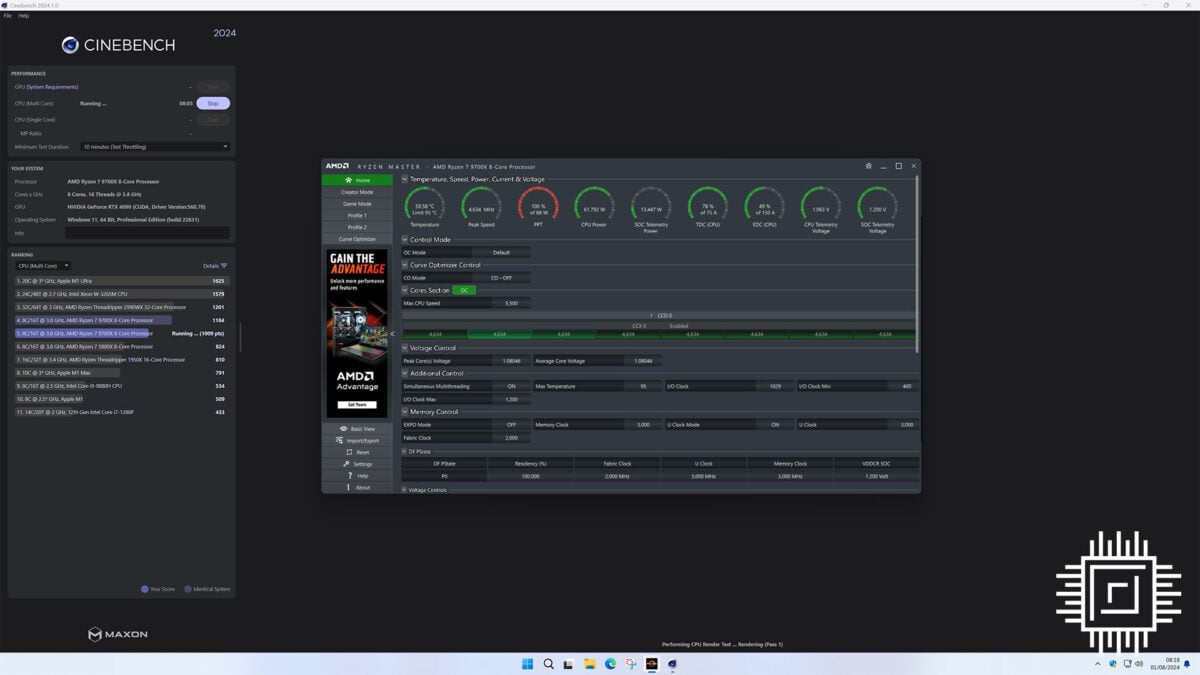
Let me drill down for you and find out what’s going on. Here’s where the Ryzen 7 9700X’s 65W TDP actually works against it from a performance perspective. You see the limiting factor is package power tracking (PPT) that’s set to 88W. The chip hits this wall very quickly and then modulates frequency and voltage to remain up against it.
The upshot is an all-core frequency of 4.634GHz, considered low for a modern processor. The Ryzen 7 7700X, meanwhile, runs a 105W TDP and uses this extra headroom when scaling all the way up to 5.285GHz on the same platform.
All of this means temperature remains wonderfully low under load, barely hitting 60C, and this means you can run the chip with very quiet air cooling in both small and large chassis.
Nevertheless, what Ryzen 7 9700X gives up in frequency it makes up for by smarter architecture and larger caches. I can’t help but feel AMD ought to have launched it at 105W because the foundational power of Zen 5 is clear to see.
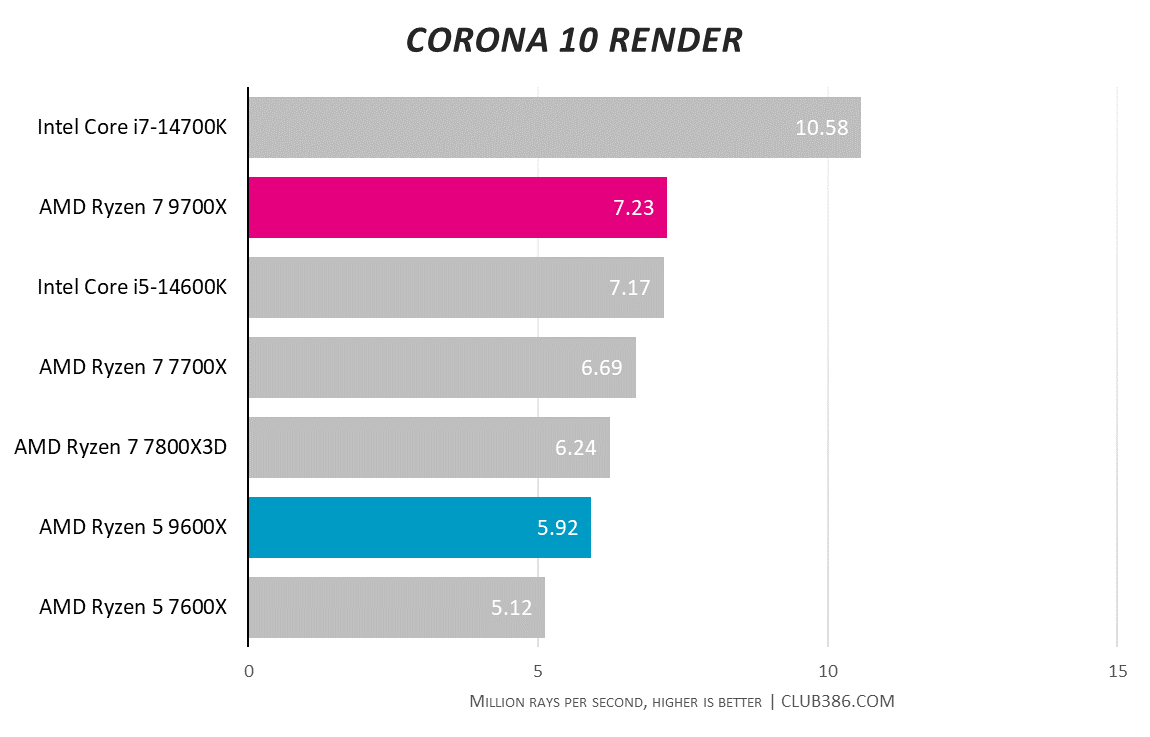
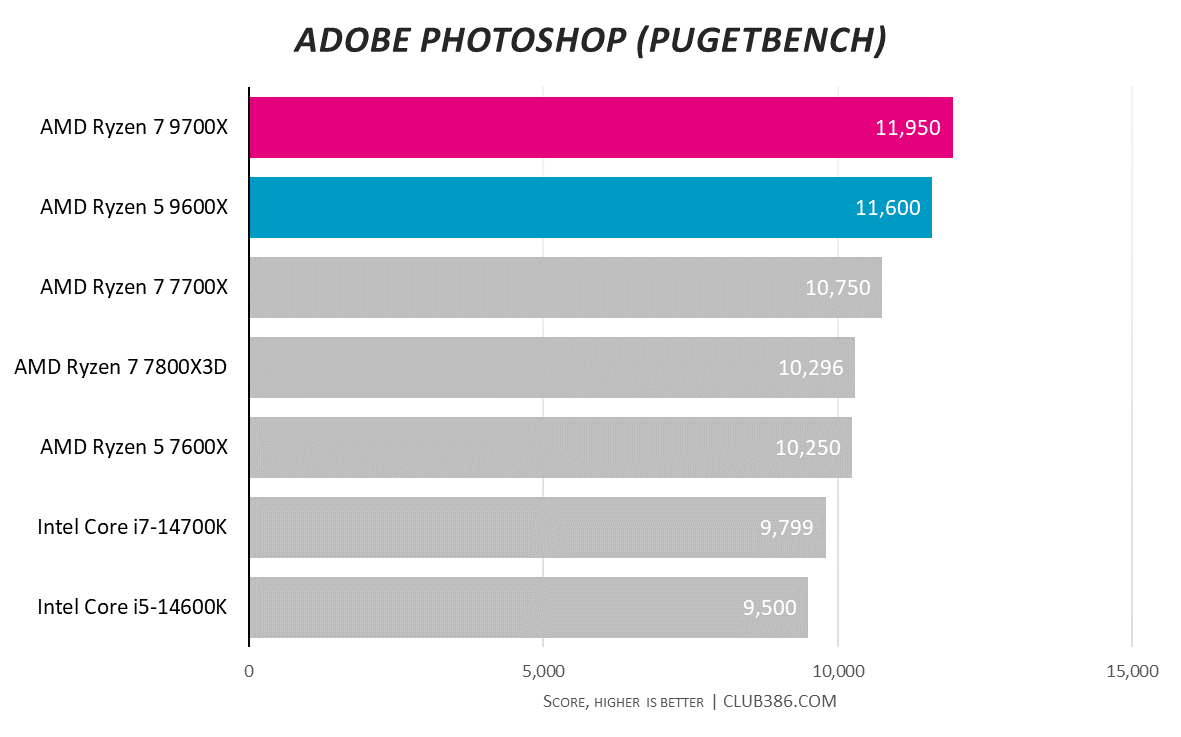
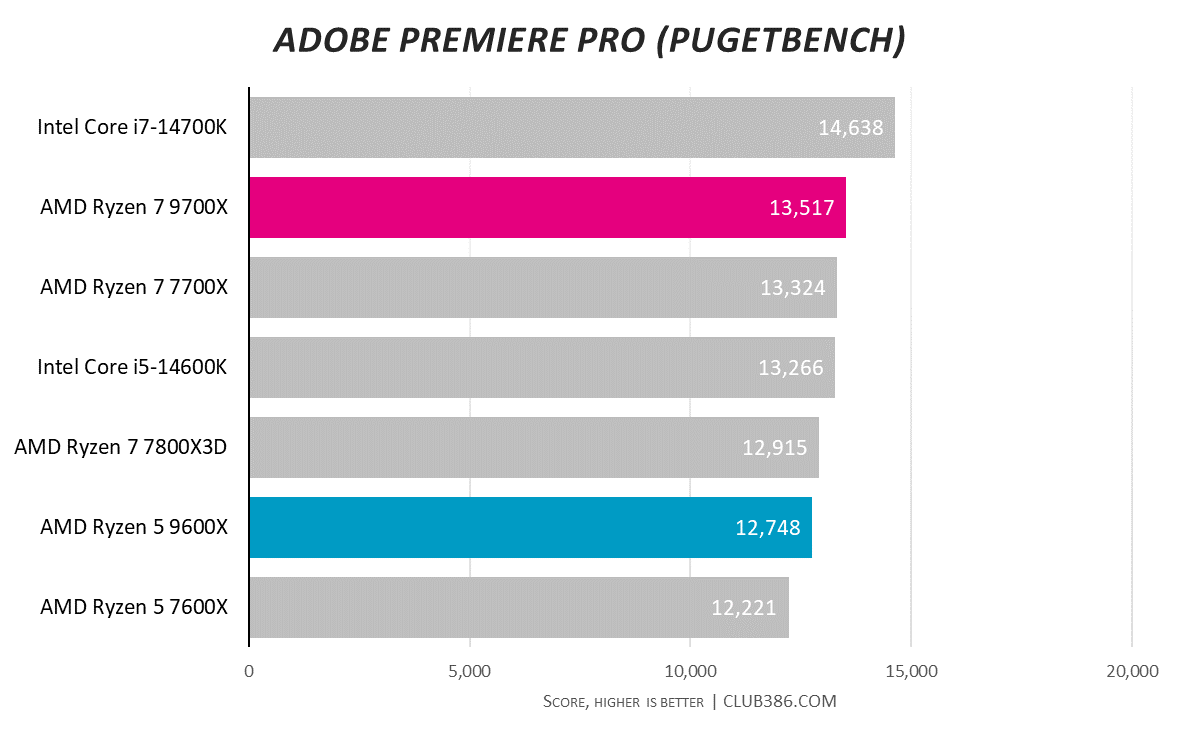
Overall, though, I can still make the case that Ryzen 9000 Series CPUs are more performant than the previous generation. Of course, you would certainly expect so, and AMD’s sacrificed potential performance at the altar of efficiency.
Memory

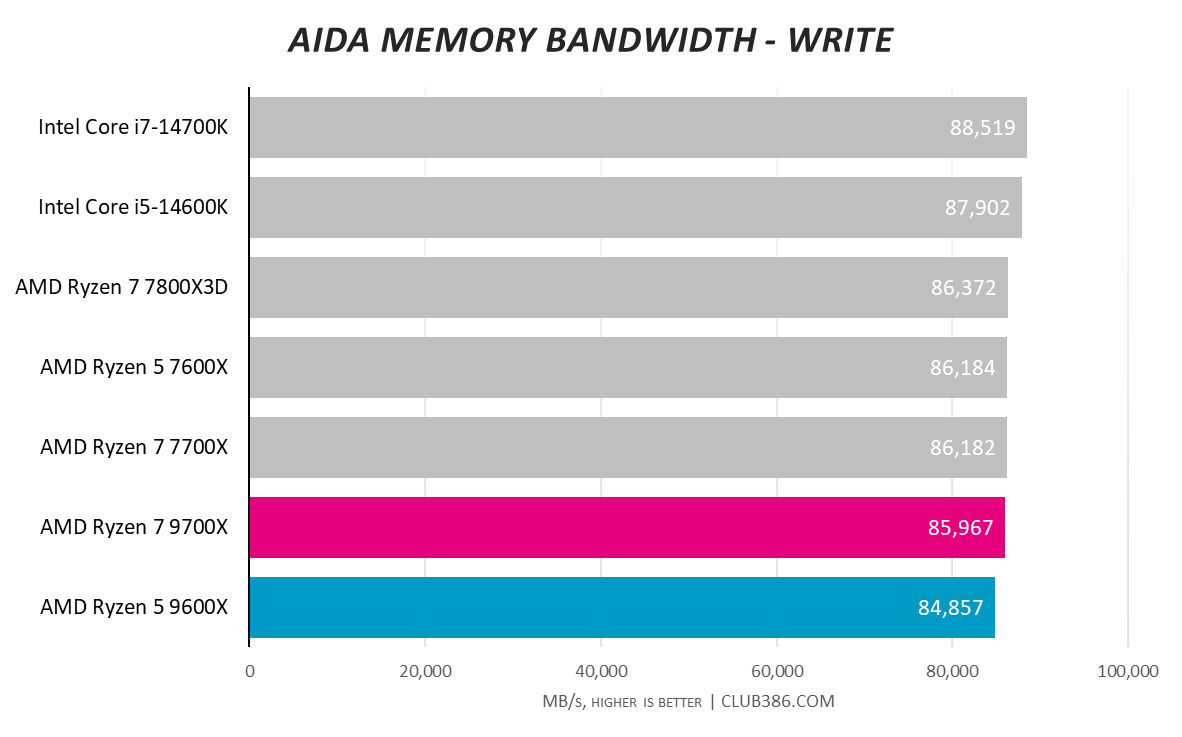
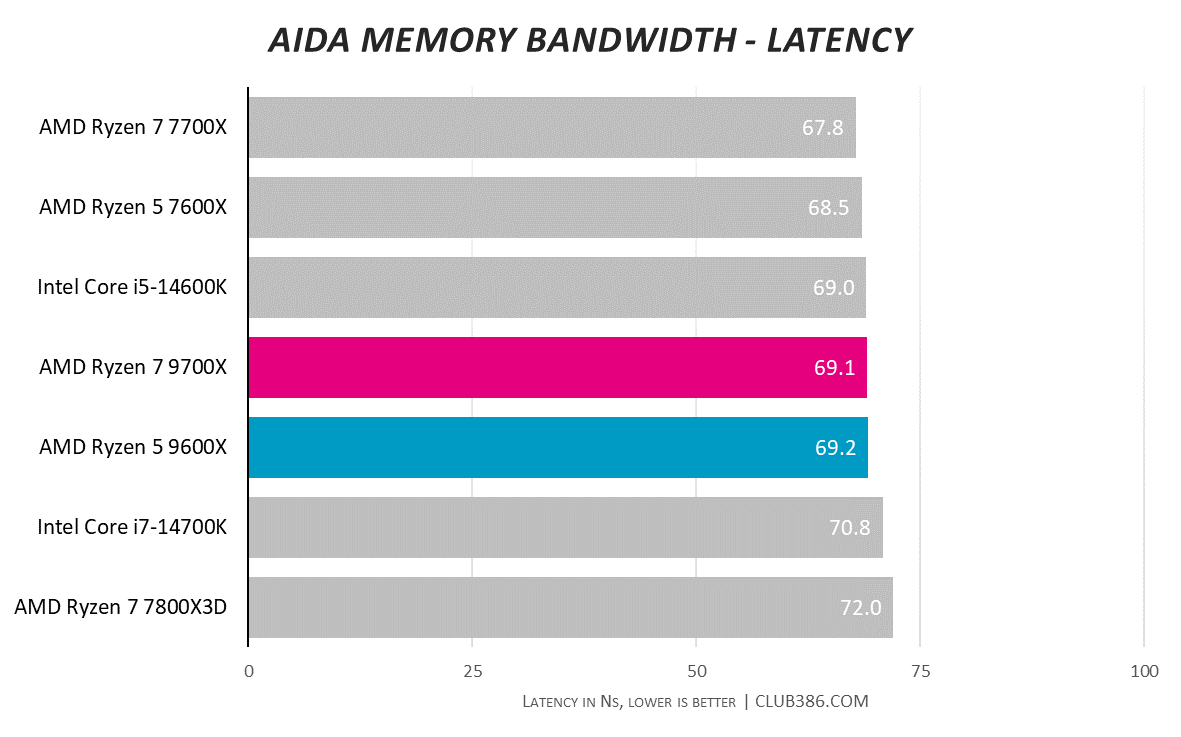
AMD’s memory topology doesn’t change between generations. With all chips run at DDR5-6000 CL36, Intel leads the way in pure bandwidth.
Gaming
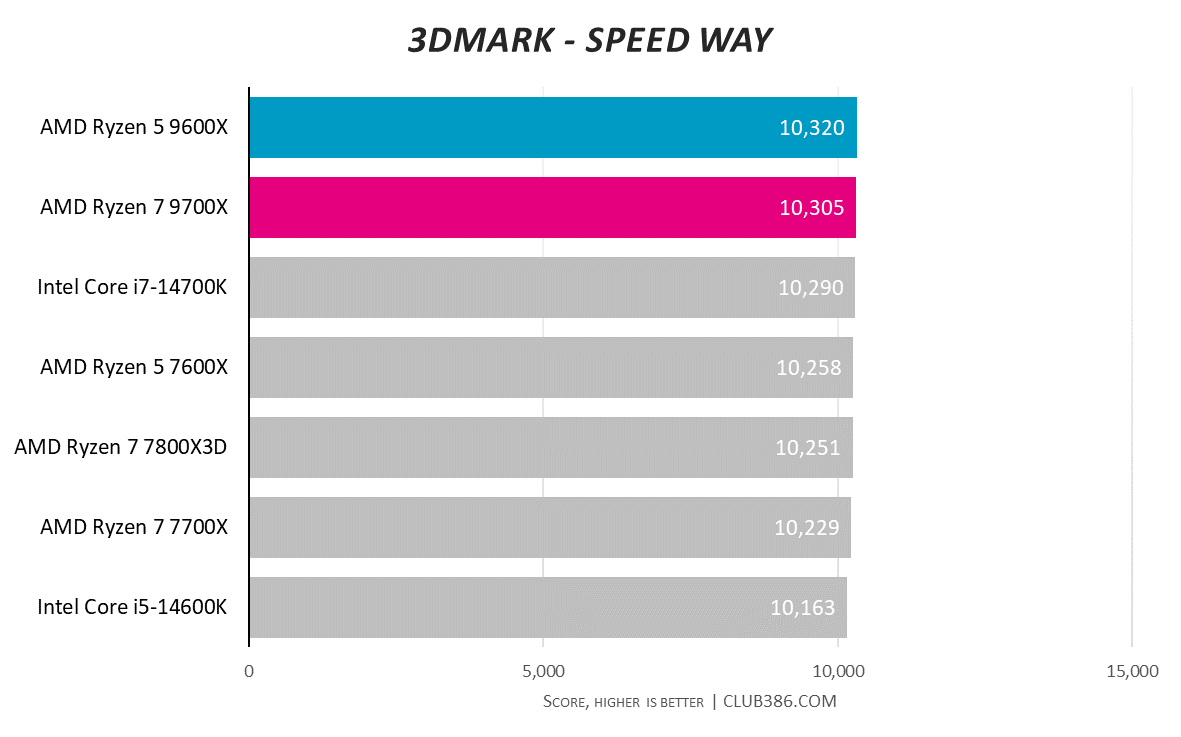
Whoa, Nelly, practically a dead heat when an Nvidia GeForce RTX 4090 is doing the heavy lifting.
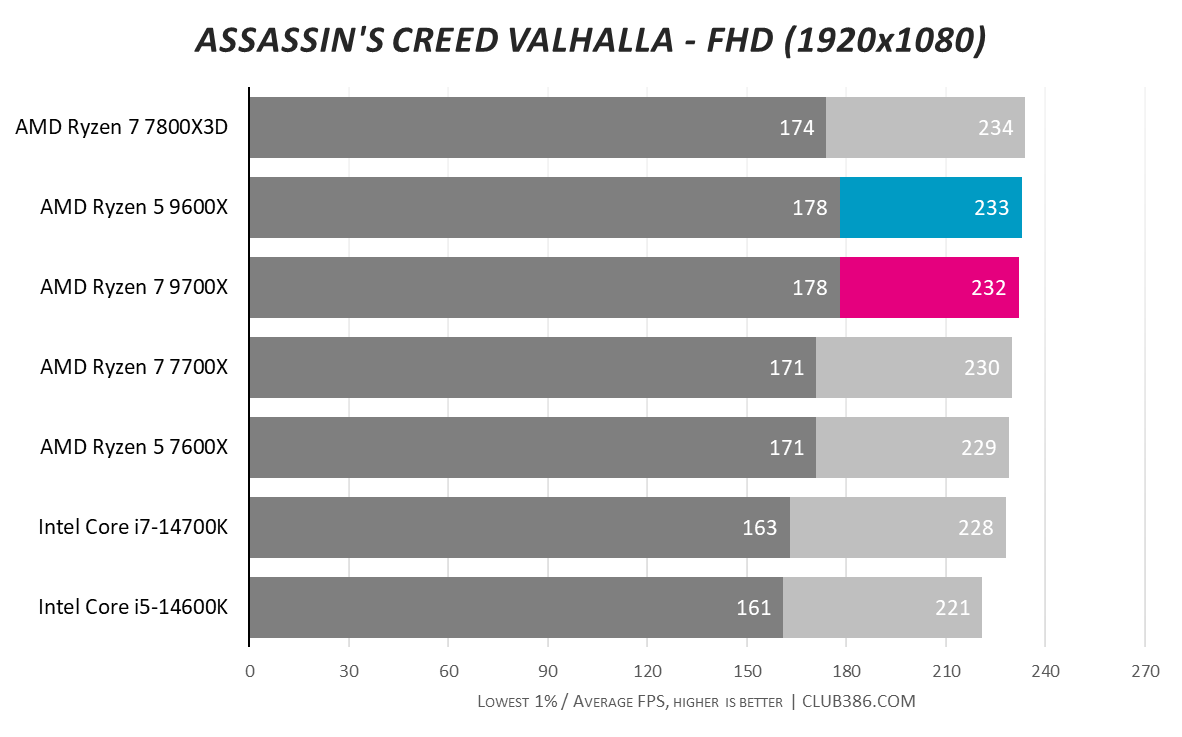
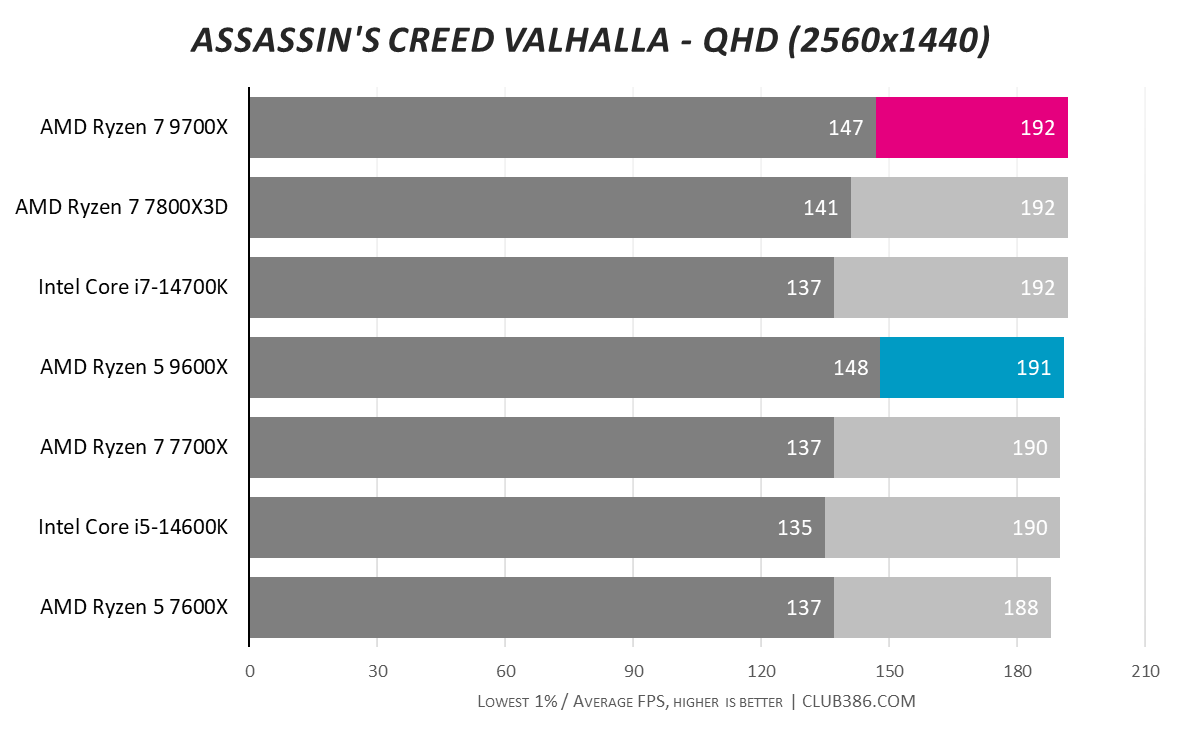
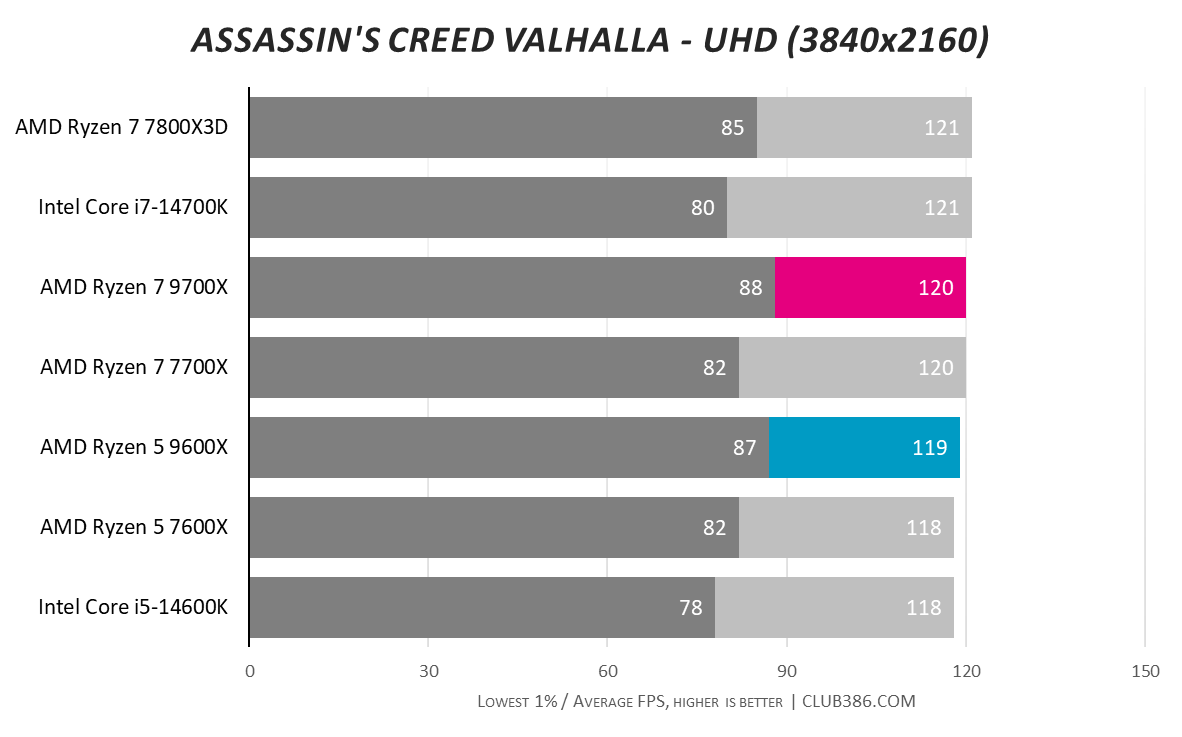
In the first real-world game, the new Ryzen duo does a good job at pushing out framerate. That said, you can’t visually tell the difference between any processor’s performance.
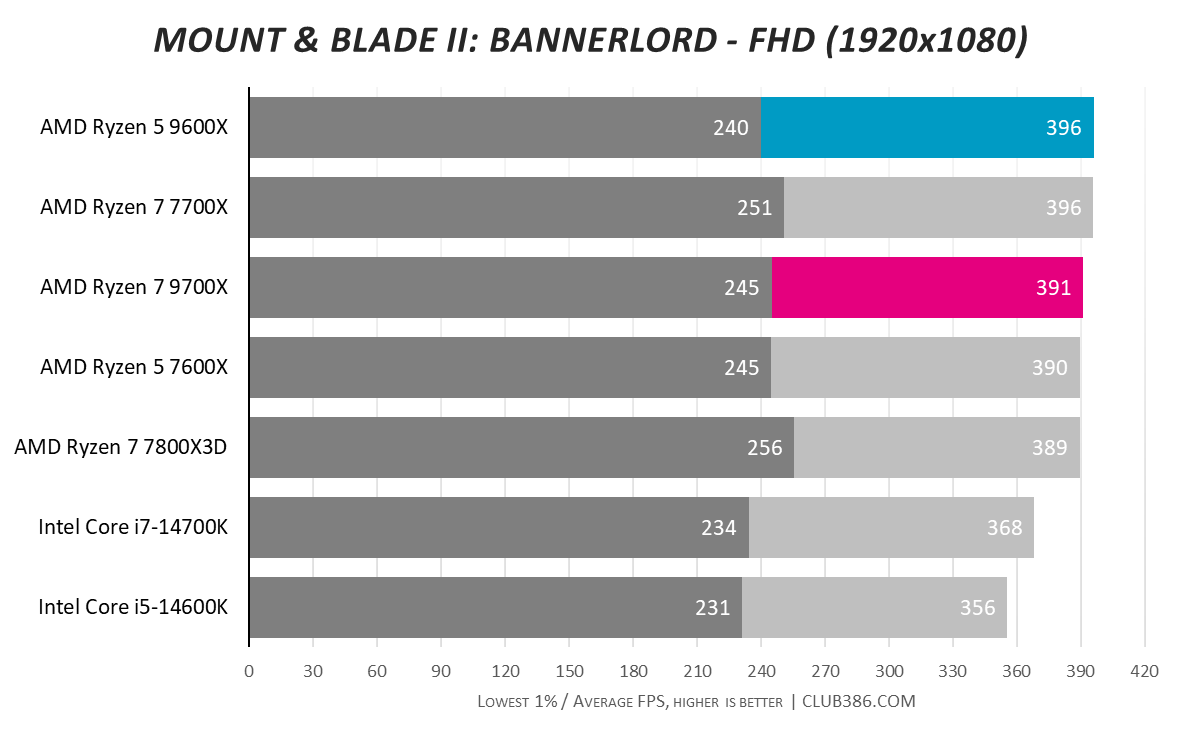
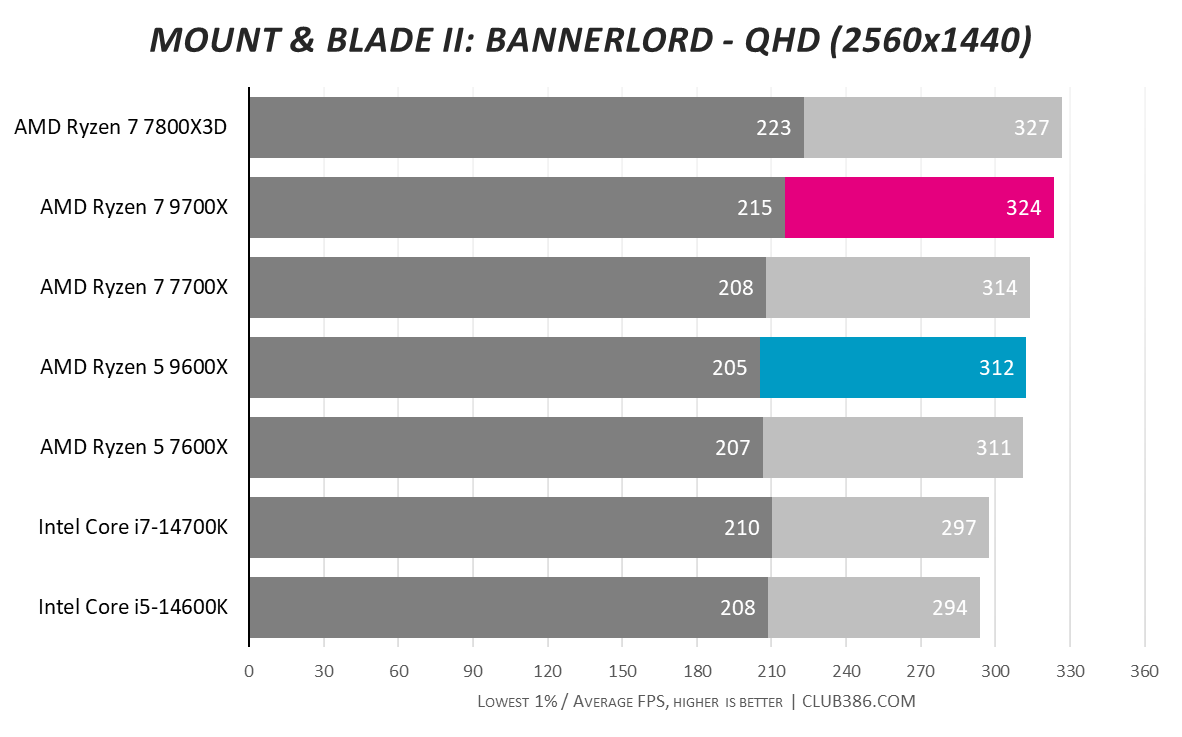
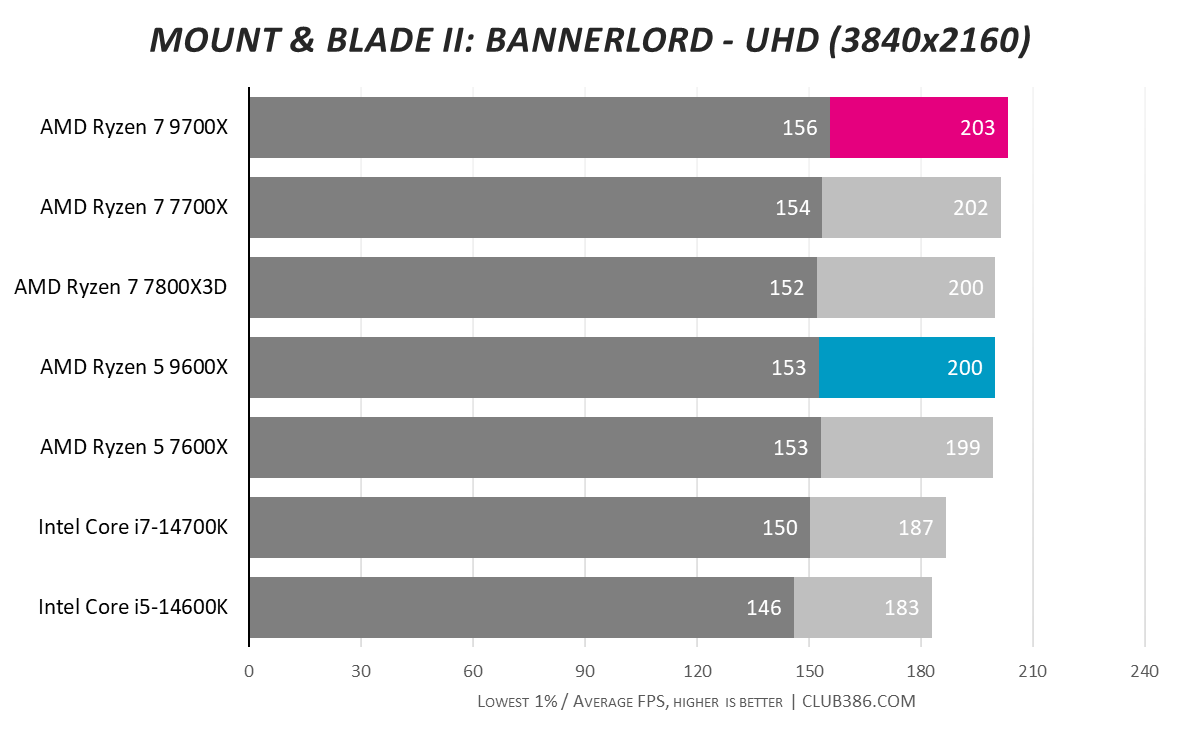
Here’s a title that loves lots of CPU oomph. Running better on AMD hardware, there’s a very small lead for Ryzen 9000 Series CPUs over their brethren.
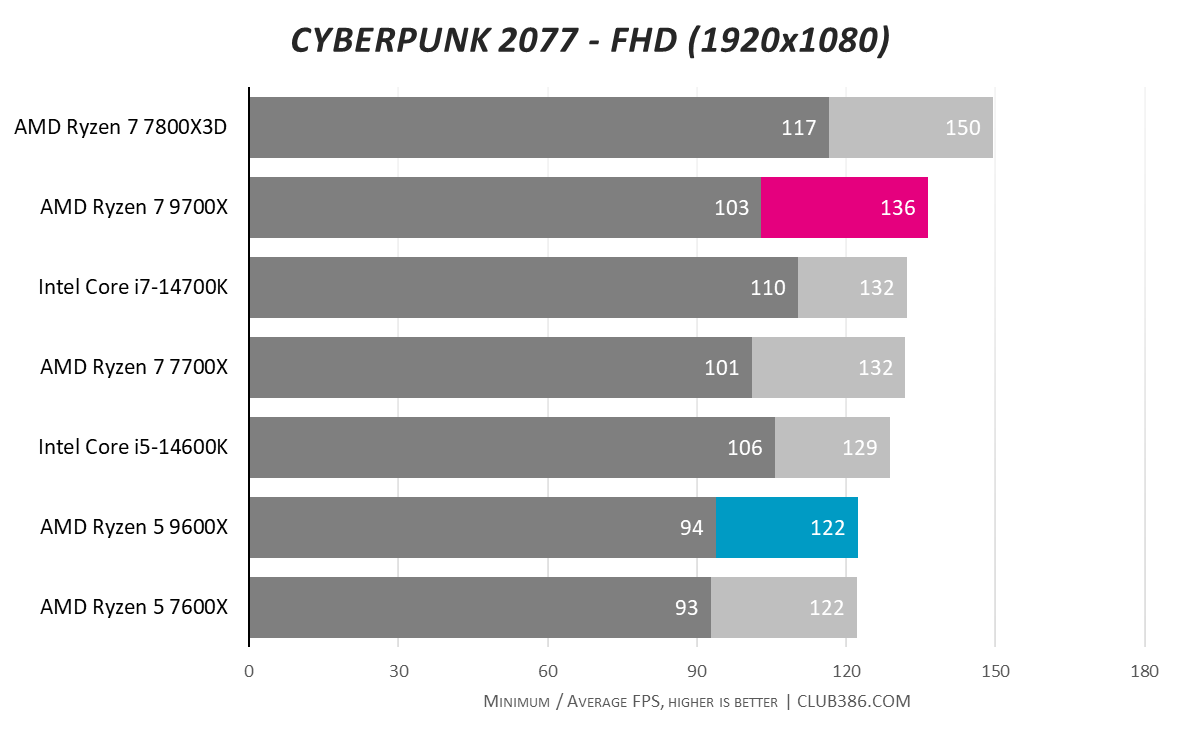
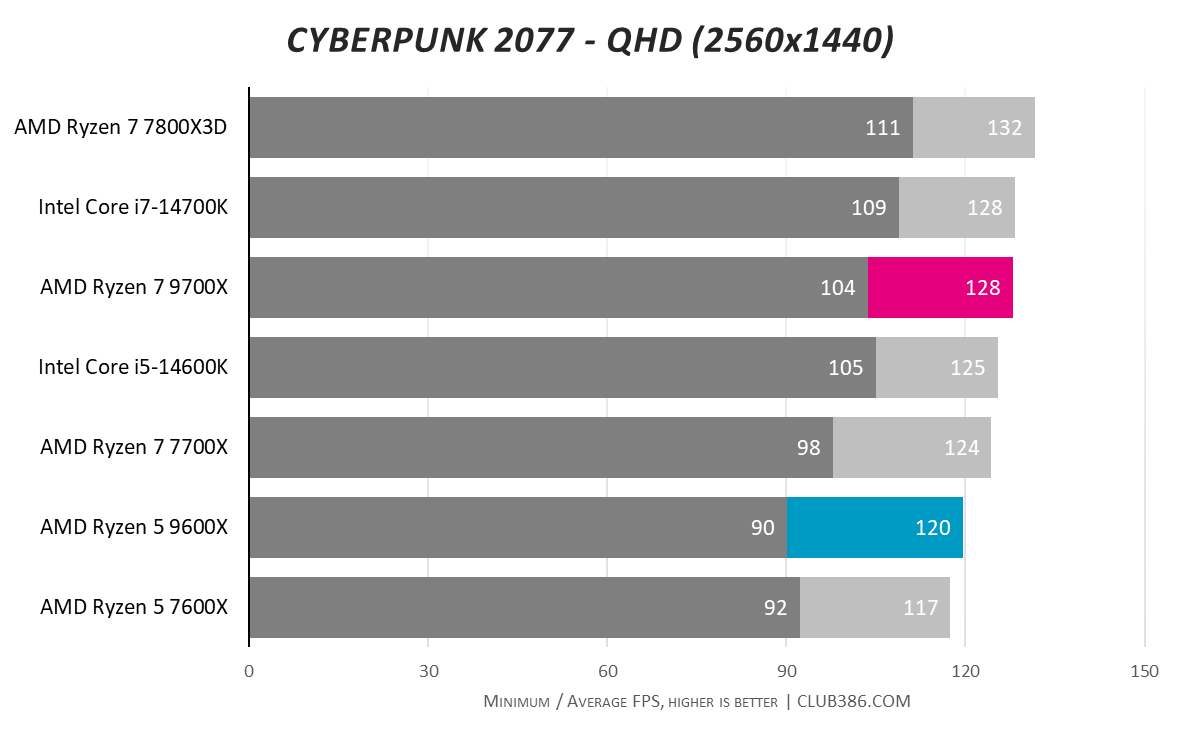
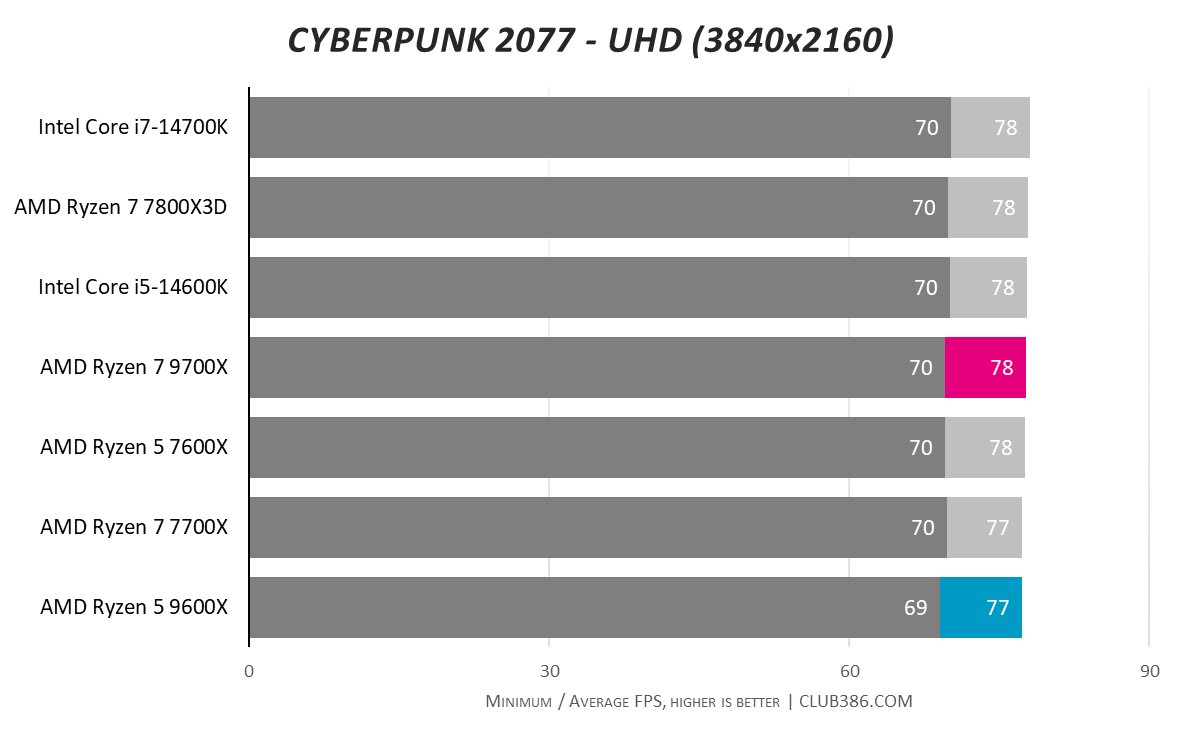
Cyberpunk enjoys cores and the Zen 5 architecture. Even though the 9700X part runs a comparatively low gaming frequency, there’s enough under the hood to elevate FHD performance to below the cache-enriched Ryzen 7 7800X3D.
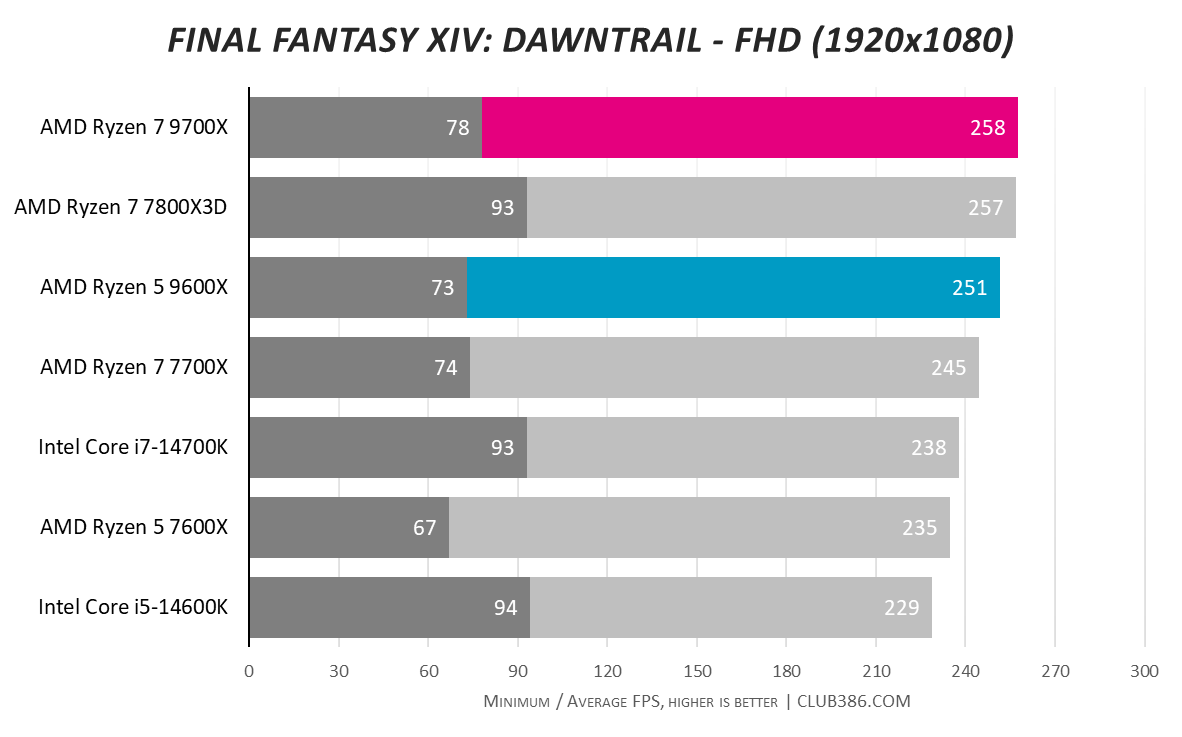
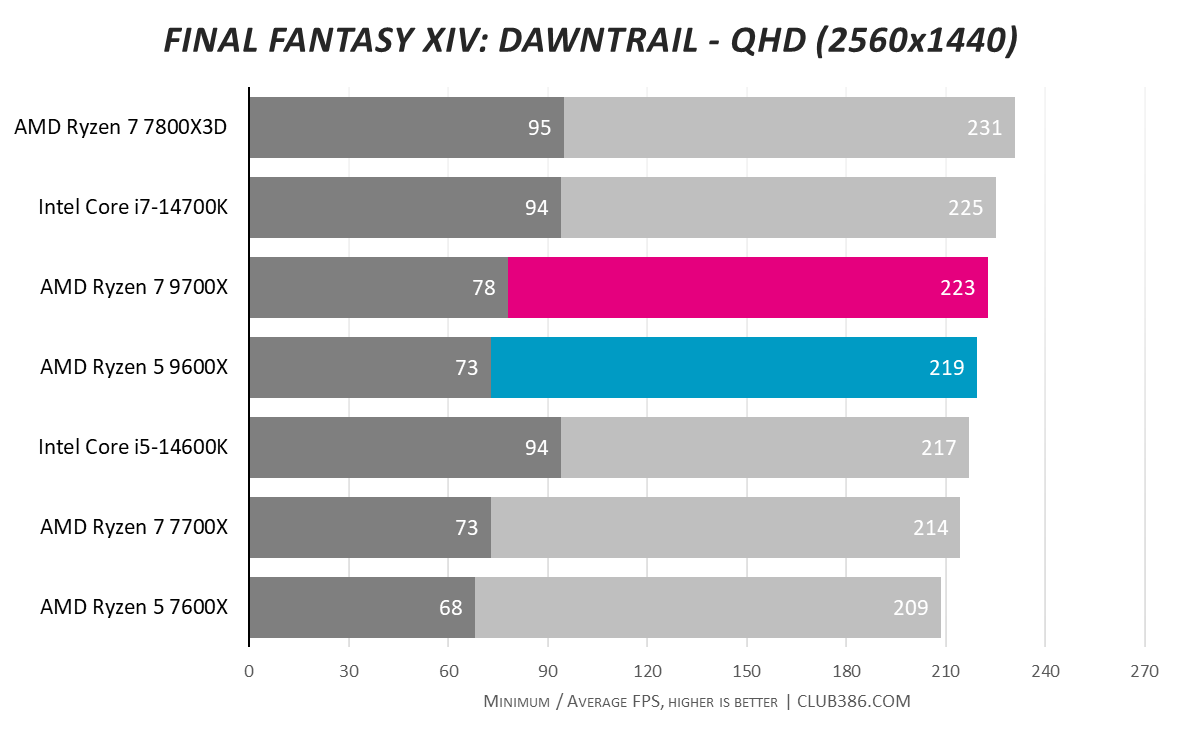
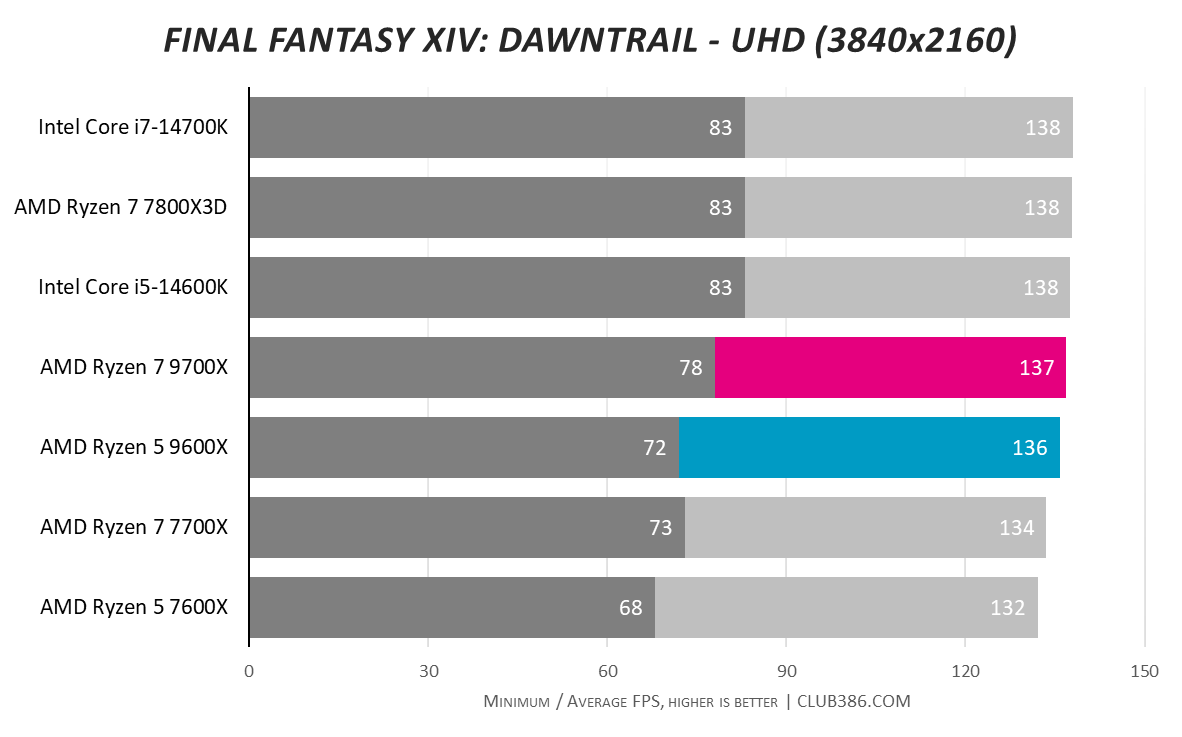
More evidence that the Zen 5 architecture plays nicely with gaming. But let me be clear, neither the Ryzen 7 9700X nor the Ryzen 5 9600X are better gaming chips than the Ryzen 7 7800X3D, and this is precisely why AMD didn’t compare to it in briefing documents.
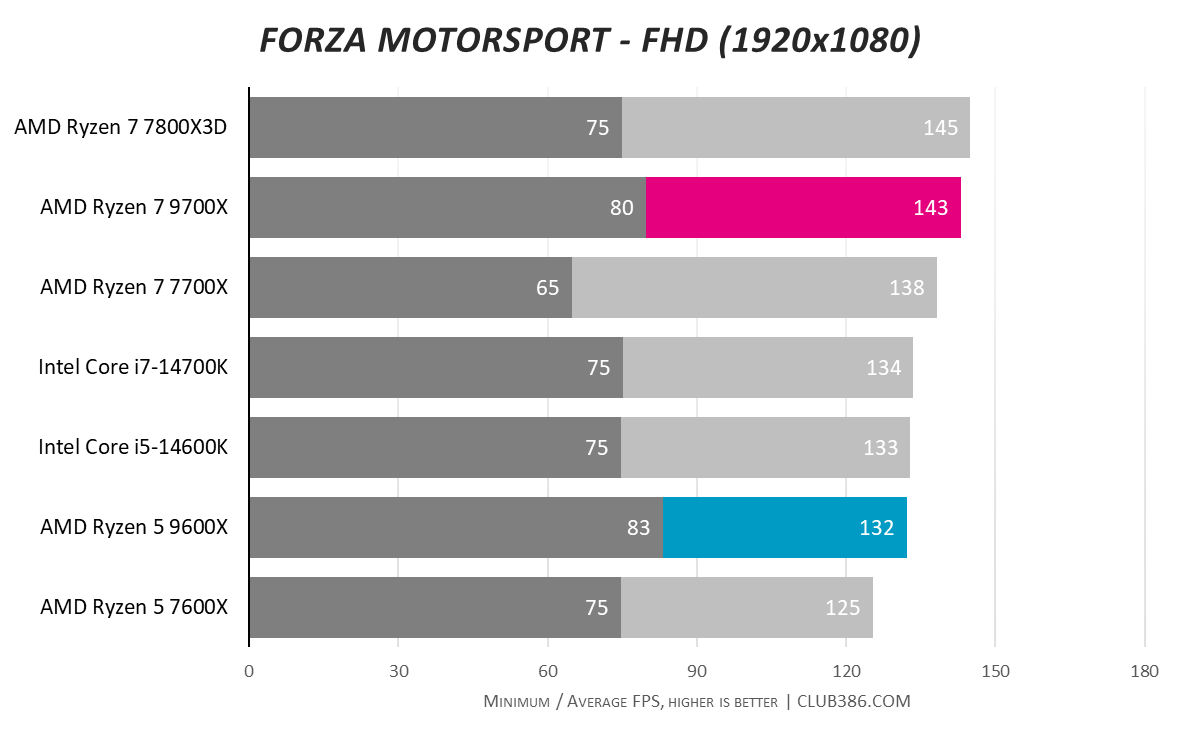
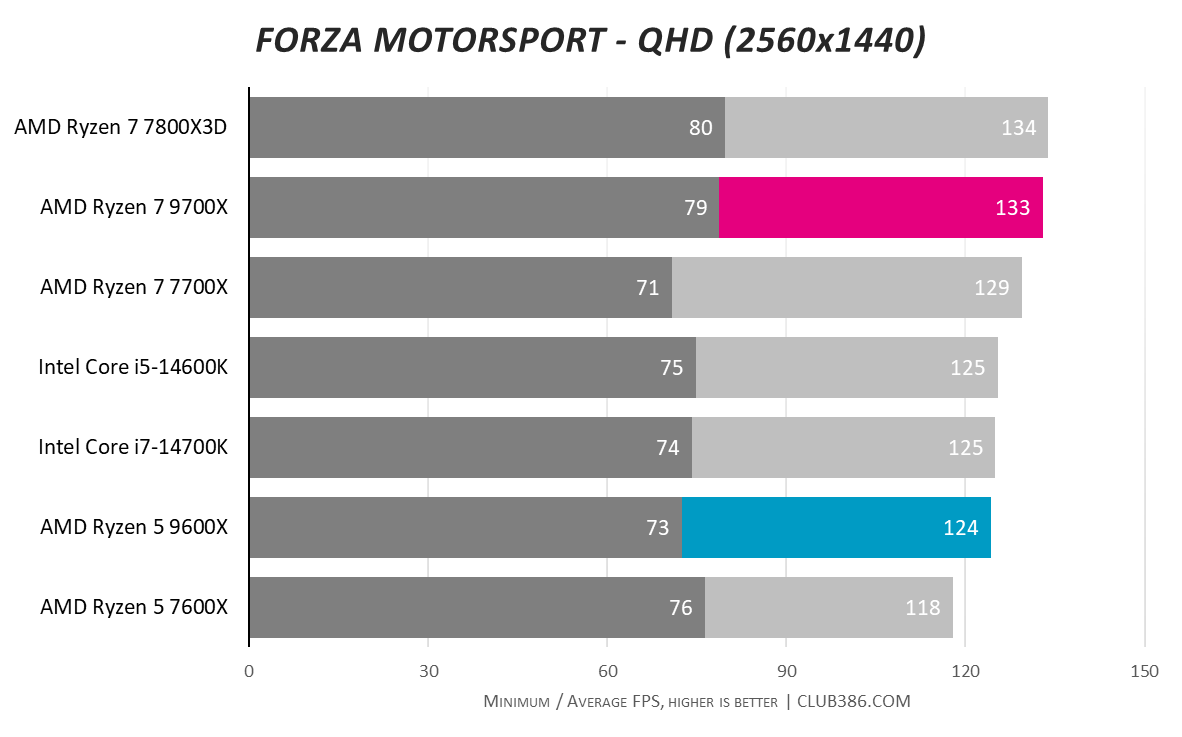
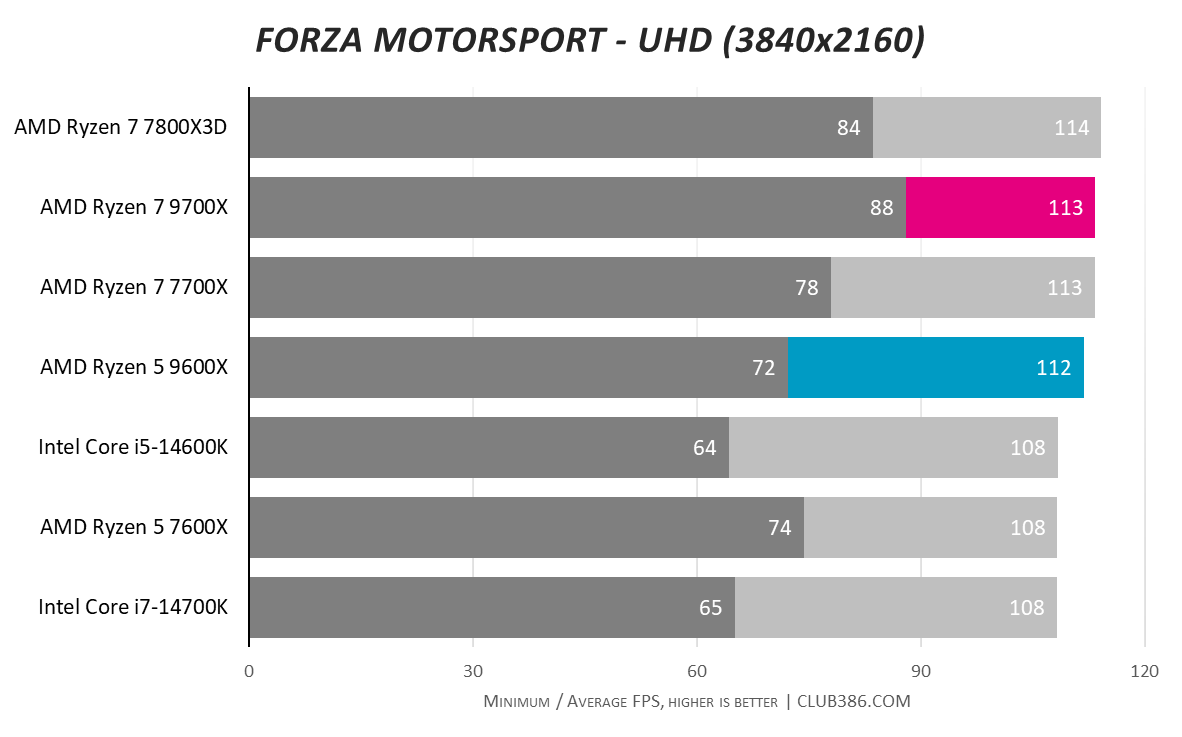
Should you game with a high-end GPU, I’d recommend the Ryzen 7 9700X; the other review chip’s fewer cores are exposed by the rampaging RTX 4090.
Efficiency and Value
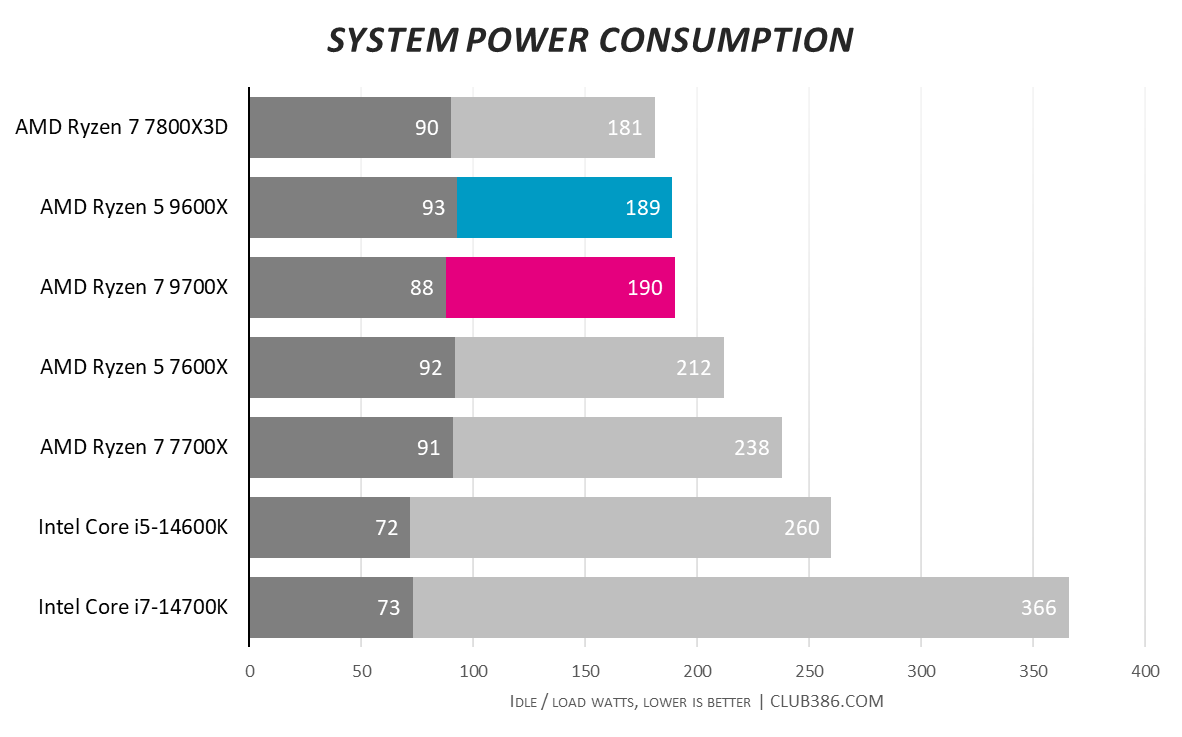
Evaluated as a system and taking Cinebench 2024’s multi-core test into account, AMD’s efficiency focus is clear.
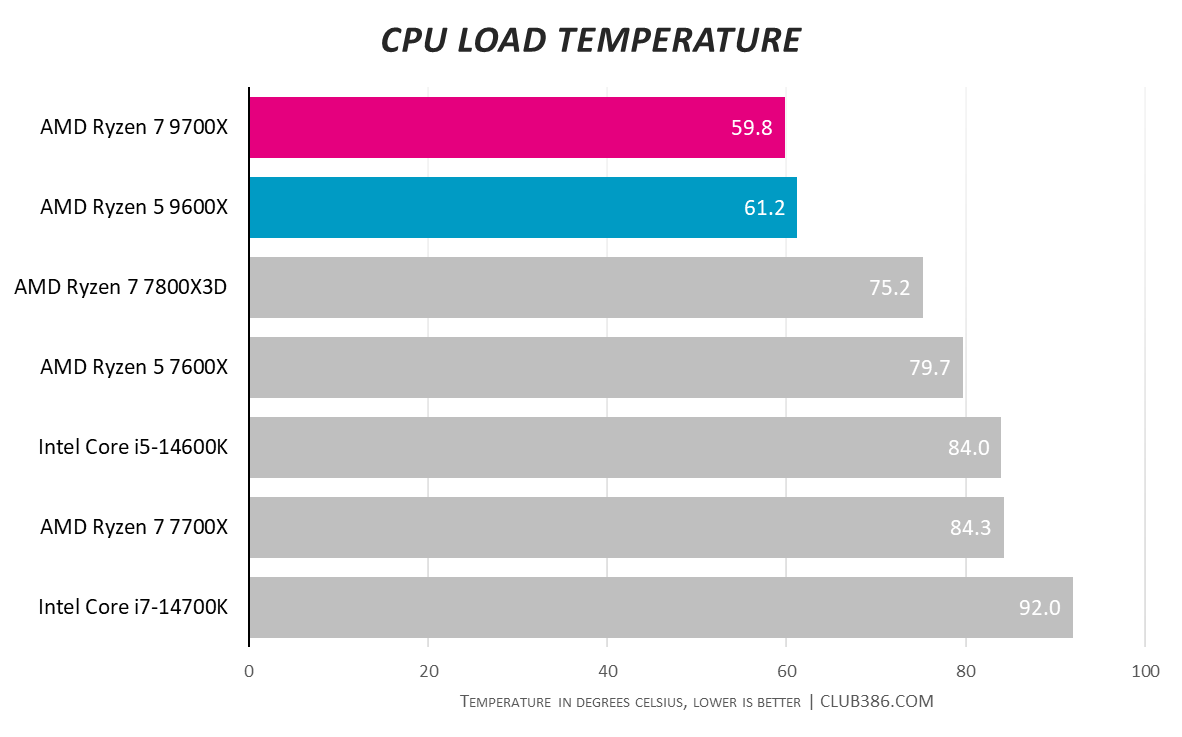
And this translates to cool and quiet running. AMD’s 9000 Series’ focus on optimised silicon floor planning and removing potential hot spots comes to fruition. Temperatures are best in class.
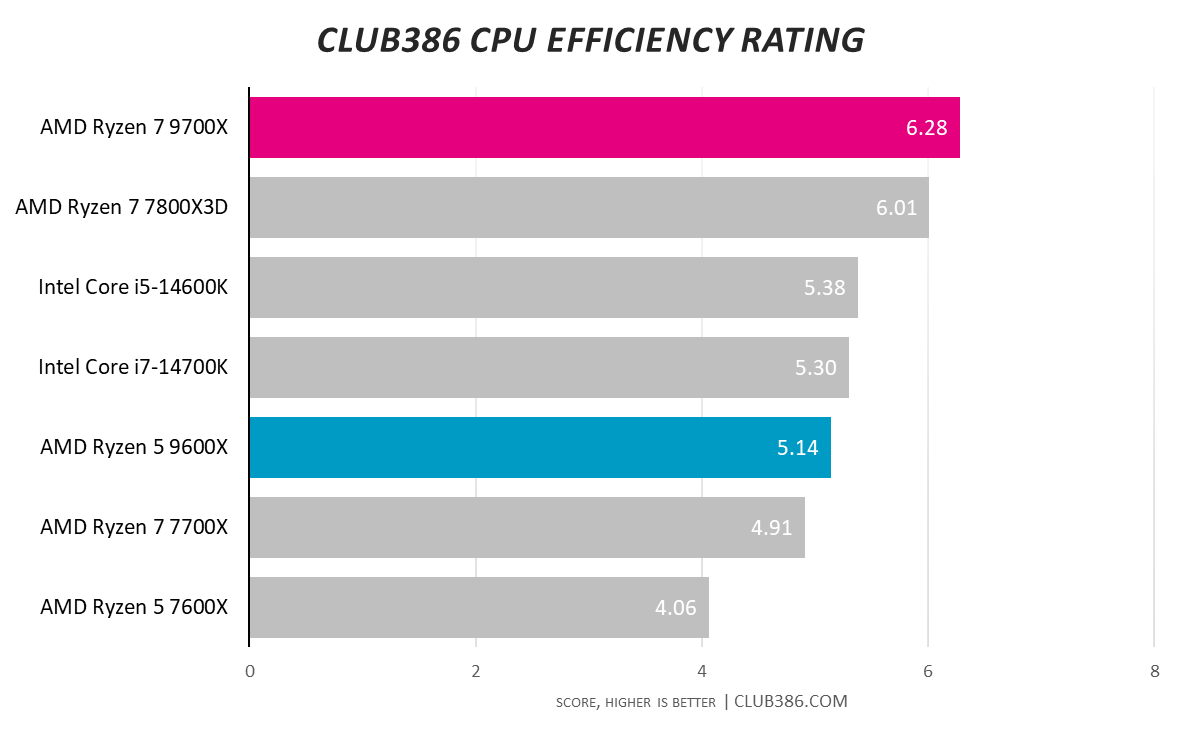
This graph divides the same Cinebench 2024 multi-core score by the noted power consumption. Here’s where the new Ryzens are fundamentally better than 7000 Series CPUs.
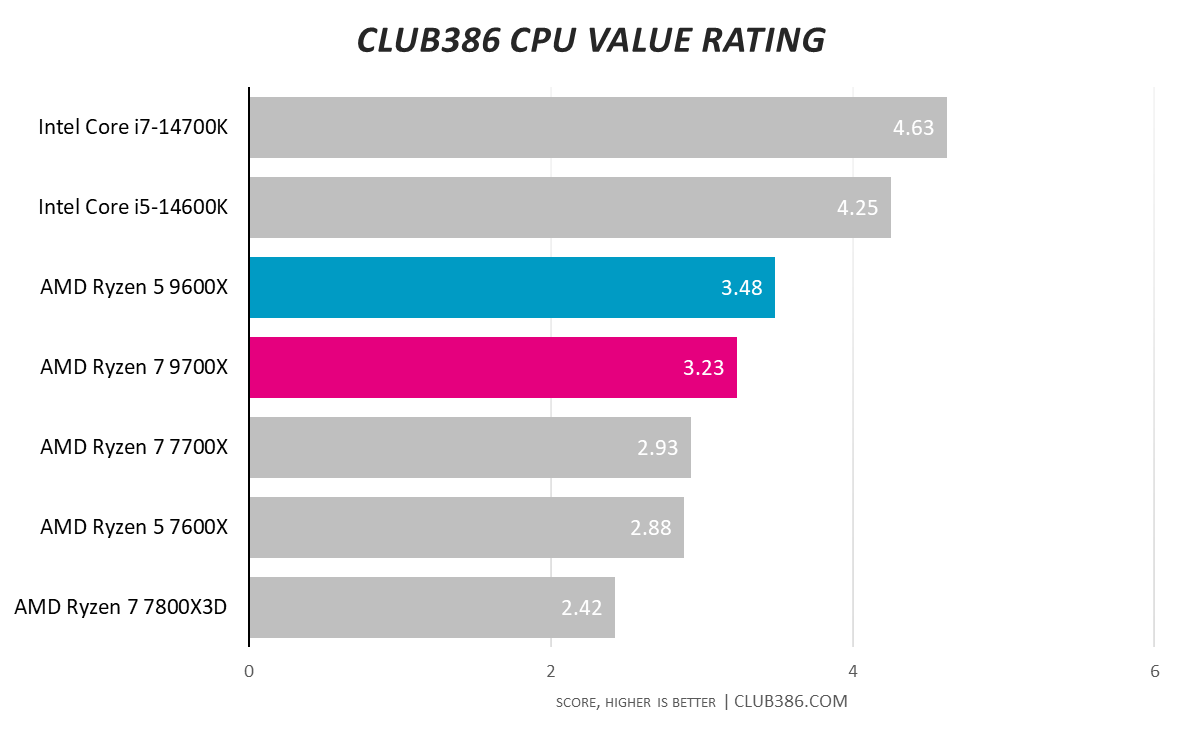
The graph divides, you guessed it, the Cinebench 2024 nT score by launch MSRP for each respective processor. Intel’s more-core approach pays handsome dividends here.
But it’s not actually as simple as that. In-market processors tend to drop in price over time, pushing their value metric up, and it’s now possible to buy the Ryzen 7 7700X for $295 ($399 RRP) and Ryzen 5 7600X for $229 ($299 RRP). Plugging those numbers in pushes their respective scores to 3.96 and 3.76, respectively.
Conclusion
Zen 5 is a foundational microarchitecture that defines AMD’s thinking for the next few generations. Fundamentally a wider core engine, I can’t help but feel it’s been designed for the datacentre first and foremost. That is absolutely the right approach as the bulk of AMD’s revenues emanate from that segment.
Unlike rival Intel, AMD keeps to the established core-and-thread hierarchy as three previous generations spanning five years, translating to a 6C12T Ryzen 5 9600X and 8C16T Ryzen 7 9700X. Furthermore, AMD ringfences potential by mandating a 65W TDP for both processors. The upshot is productivity performance that’s not much better than Ryzen 7000 Series.
Implementing Zen 5 on the desktop in this way presents challenges. Core i7-14700K is miles faster than Ryzen 7 9700X for many productivity and rendering tasks, while Core i5-14600K oftentimes paints a similar picture against Ryzen 5 9600X.
An easy fix for AMD is to realign pricing with performance. Every product can shine if the cost is keen enough. The current $359 (£340) and $279 (£270) asking fees for the new mid-range chips is therefore too steep. I’d suggest a maximum of $299 and $249, respectively, thus increasing their immediate attractiveness substantially.
Nevertheless, there are bright spots. Zen 5 is adept at gaming, even if neither chip can muster enough fps to overhaul Ryzen 7 7800X3D. Power consumption and temperature are both excellent, too, and some applications take a shine to the new architecture’s focus on floating-point prowess. I can’t also ignore how easy it is to swap out from a Ryzen 7000 Series to a 9000 Series CPU, too.
Having tested a plethora of chips over the last two weeks, I find it difficult to outright recommend the new Ryzen chips in the current climate. AMD’s incremental generational performance gains hark back to a bygone era where Intel did much the same thing for many years, stifling true advancement by playing it abundantly safe.
Verdict: A conservative interpretation of Zen 5 leaves Ryzen 7 9700X and Ryzen 5 9600X in tough spots.

